

Italy’s 2023-2027 tourism strategy: Embracing sustainability, innovation, and global cooperation
Policy 16 september 2024 italy’s 2023-2027 tourism strategy: embracing sustainability, innovation, and global cooperation.
Adventure tourism
Coastal, maritime and inland water tourism
Cultural tourism
Login / create an account to be able to react
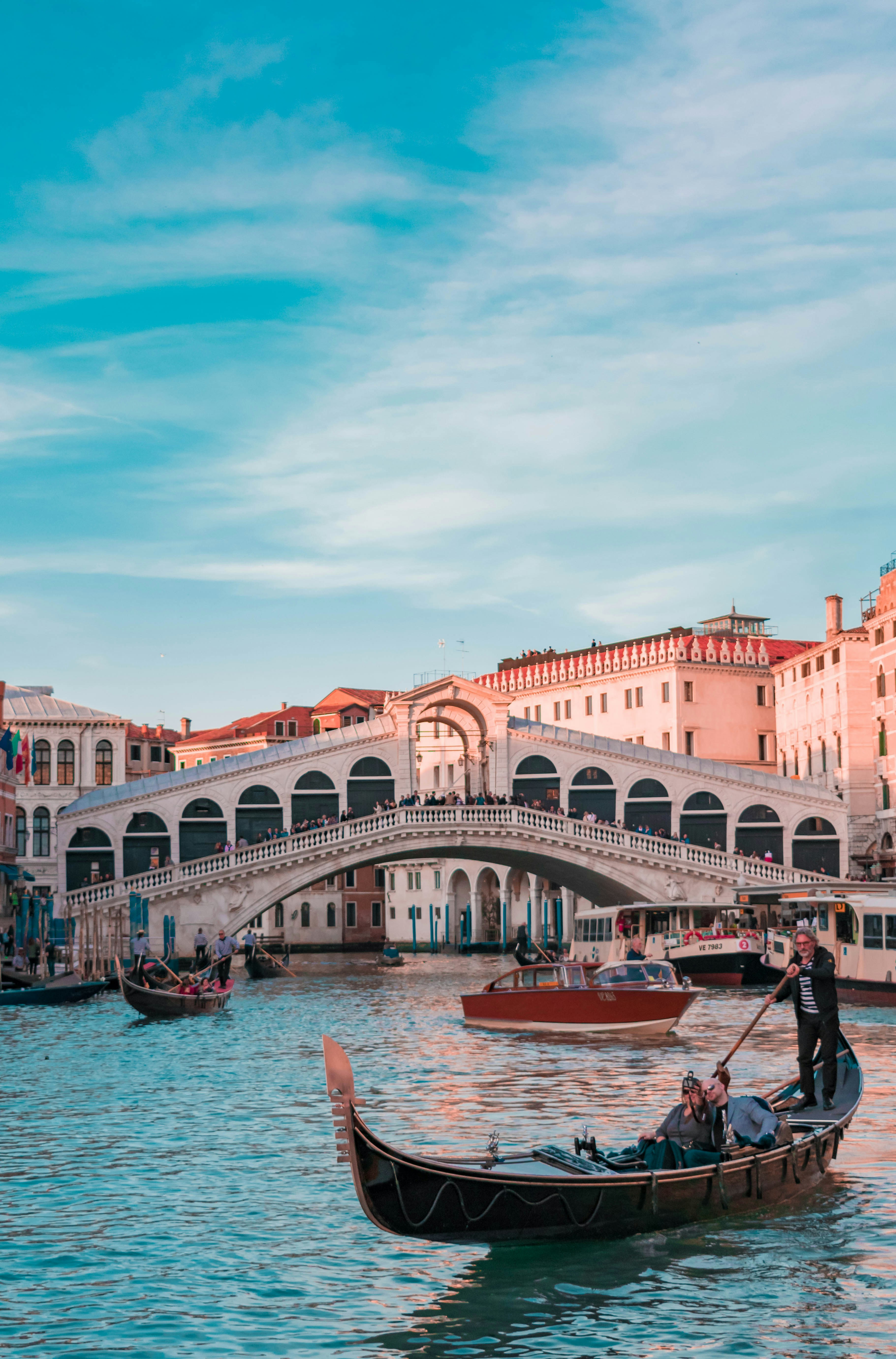
Italy’s 2023-2027 tourism plan aims to enhance the sector through sustainability, innovation, and global cooperation, creating a resilient and adaptable industry.
Italian Chamber of Deputies
Specific types of tourism
Education tourism
Festival tourism
Gastronomy tourism
Health and medical tourism
MICE tourism
Mountain tourism
Religious tourism
Rural tourism
Sports tourism
Urban/city tourism
Wellness tourism
Transition Pathway Strategic Areas
Green Transition of Tourism Companies and SMEs
Innovative tourism services
Sustainable mobility
Tourism strategies
Business activities
Activities of amusement parks and theme parks
Activities of associations and other organisations supporting tourism
Air passenger transport
Camping grounds, recreational vehicle parks and trailer parks
Events catering and other food services
Festivals, cultural and entertainment activities
Gardens and nature reserves activities
Holiday Housing / Apartments and other short stay accommodation
Hotel and similar accommodation
Mobile beverage services
Mobile food services
Operation of historical sites
Other accommodation
Other amusement and recreation activities
Other food and beverage services
Other holiday reservation services
Other tourism transportation activities
Rail Passenger transport
Recreational and sport activities
Restaurants, cafes and bars (Food and Beverage serving activities)
Road passenger transport
Tour operator activities
Travel agency activities
Water (sea, coastal and inland) passenger transport
The strategic plan for the development of tourism in Italy for the period 2023-2027 aims to boost Italy’s tourism sector by focusing on sustainability, innovation, and international cooperation. It provides information about the current state of tourism, including analysis of international and national tourism and COVID-19 impact on tourism in Italy, strategic directions such as trends for a new tourism paradigm, green deal for tourism, behavioral analysis for ecological transition, and national recovery and resilience plan.
The primary objective is to enhance the growth and competitiveness of the Italian tourism sector that can adapt to changing global trends and challenges. In addition, the document focuses on promoting sustainable tourism practices that protect the environment and cultural heritage, leveraging digital technologies to improve tourism services and marketing, and ensuring that tourism development benefits all regions and communities.
For an in-depth analysis and further insights, pleaфse visit the linked source on the left-hand side of the platform (The original piece available only in Italian).
Comments (0)
Login / create an account to be able to comment
Related content
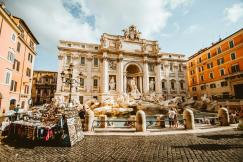
Read more<span class="visually-hidden"> about Italy national tourism strategy 2023-2027: Enhancing competitiveness and sustainability</span>
15 Aug 2024
Italy national tourism strategy 2023-2027: Enhancing competitiveness and sustainability
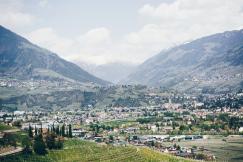
Read more<span class="visually-hidden"> about Strategic tourism development plan for South Tyrol 2022-2030: Integrating tourism and living space for sustainable growth</span>
16 Aug 2024
Strategic tourism development plan for South Tyrol 2022-2030: Integrating tourism and living space for sustainable growth
- Support resources
- 28 Aug 2024
Funding opportunities in Italy
- TTP reports
- 10 Sep 2024
Tourism Transition Pathway: Co-creation and co-implementation process
The updated EU Industrial Strategy emphasizes the urgency of accelerating the green and digital transition across EU industries and their ecosystems. It calls for collaboration...
European Commission takes stock of progress towards a green and digital tourism
The European Commission has released a report on its first review of the Transition Pathway for Tourism, the most advanced of the transition pathways. Two...
Did you find this useful? Please rate this page or give us more feedback

- ENELPREMIA WOW!

Can travel, will travel… with zero impact
- Sustainability

Ecotourism and sustainable tourism in Italy
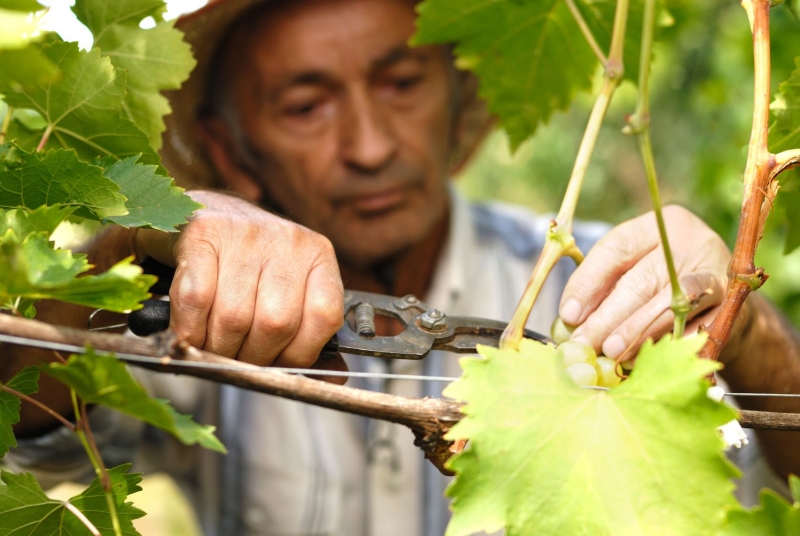
As citizens, communities and countries around the world are becoming more and more aware of their environments, we as a global community are seeing more responses and efforts that recognise that we want and need to take better care of our planet. Most, if not all, aspects of life have an effect on the well-being of our environment, many industries, public and private, are now trying to reduce the damage that we leave on our planet. From improved infrastructures such as the expansion of recycling-bin systems to the ever-growing availability of electric cars. Every industry has their chance to make a difference, and that definitely doesn’t exclude the tourism industry. Ecotourism is the tourism industry’s response to being responsible for the planet with live on and the communities we live with. According to The International Ecotourism Society (TIES), the definition of ecotourism is “responsible travel to natural areas that conserves the environment and sustains the well-being of the local people” and this branch of tourism has hopes of “ mainstreaming sustainability ”
Ecotourism and sustainability in Italy?
Ecotourism aims to create positive changes in the world, especially those based around contributing to environmental, social, cultural and economic aspects of destinations and local communities. It further aims to protect the natural and cultural heritage of locations. Considering that, Italy has 54 UNESCO heritage sites , the most in the world, it seems as if ecotourism is needed in the country to preserve these locations for future generations. Ecobnb , an online travel community for sustainable tourism, explains some of the benefits that Italy has seen through sustainable and ecotourism. Firstly, economic advantages have been seen in Italy through sustainable tourism which has provided a boom in job opportunities in the country. Whereby locals have been able to work in customer service, in hotels or simply help with transport, working with taxi companies. But it’s not only economic advantages. Culturally, there has been work behind supporting the development and ultimately the preservation of tradition customs in the country. This not only helps these communities with funding for their cultural activities, but it protects them for future tourists, making them more sustainable. Finally, the social benefits of sustainable tourism. Through this revenue from tourism in the country, there has been an increase in the infrastructure, from renovated roads to improved sewage systems. This has, as a result, improved the quality of life in the country and only made it a more attractive place for tourists to visit. Ecobnb’s article sums up by stating that through sustainable tourism in the country it has seen quality growth that has allowed its heritage sites to remain pristine and well-preserved.
Top ecotourism stops in Italy?
One great example of ecotourism in Italy, is based in the already famous tourist destination of Cinque Terre in Liguria. Project Cinque Terre holds a “sustainable initiative” wherein tourists go to the beautiful location to learn about the impact of tourism on small towns like Cinque Terre. There are also activities such as helping locals build stone walls for the towns to help preservation their scenic homes. Moving just north of Liguria to the region piedmont there is a different and more luxurious end of sustainable tourism aiming to preserve a “slow food” culture in opposition to fast food. Vistaterra , a company dedicated to providing sustainable tourism with nature, cuisine and historic heritage at its heart, opened its resort last year. They provide luxury rooms for their visitors and they back the slow food movement, protecting traditional and regional cuisine, while working with local providers and businesses. At the other end of Italy, there is a similar story in Sicily. As Frommers calls it, there is a renaissance of eco and sustainable tourism in Sicily. The same local farming methods in the area have existed for centuries and now these farmers want to open the lands for tourist to understand and experience their ways of living off the rich land. There has also been many initiatives in the area dedicate to protecting the Sicilian marine life. Finally, a small story of a married couple in Tuscany which shows that this trend of ecotourism in Italy has really spread wide and far. Sadio and Donatella, a couple that combined their loves of animals and nature into a country house stay in Chianti, offer the lucky visitors that come, to take relaxing horseback rides through uncontaminated Tuscan countryside treks.
In conclusion to everything above, it seems that this relatively new and powerful trend in tourism fits perfectly with the FYI’s Mission to make every citizen of the world associate Italy with passion, culture, art, nature, food and wine.
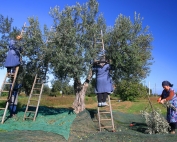
Wine & Olive Oil Tour from Como Lake to Amalfi Coast
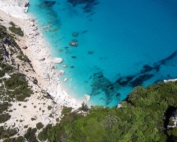
Sardinia: Food, Wine & Nature of Gallura

Foodie Italy: a gastronomic adventure from Rome to Venice
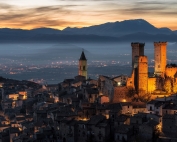
Gastronomic Route between Marche & Abruzzo
Related posts.
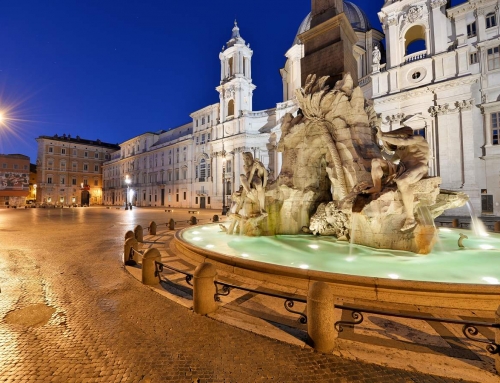
What is happening – Updates on the situation in Italy
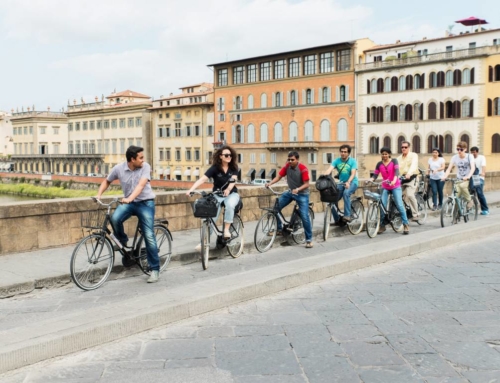
FindYourItaly, your sustainable travel partner develops new responsible travel options in Italy

The challenges of sustainable travel in Italy: the insight experience from Roberta, Product & Sales Manager at FindYourItaly

We will be at TTG Travel Experience 2019, Buy Liguria, ITW New York, London WTM: come meet your next sustainable travel partner in Italy
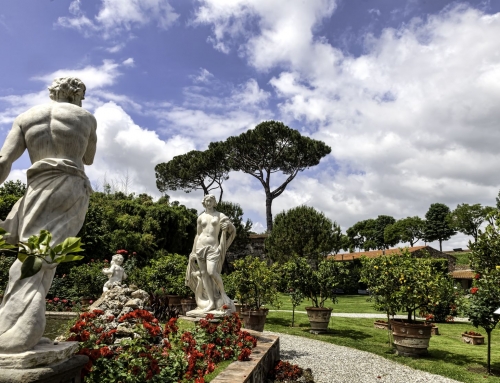
An insight on Incoming Tourism in Italy: an interview with Roberta, Technical Director & Sales Manager at FindYourItaly
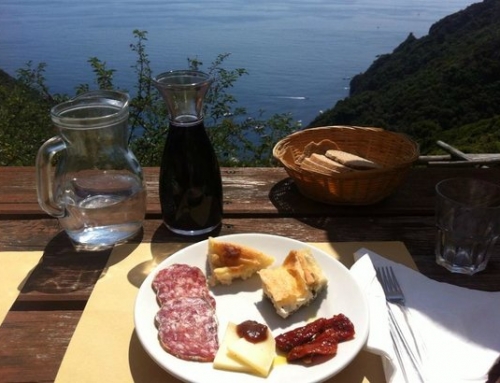
Back to the roots: find out what Drink & Taste Italy really means with FindYourItaly
- 🇮🇹 Explore Italy on Foot
Sustainable Travel in Italy: How to Be a Responsible Tourist
Ever thought of enjoying the vibrant life, stunning landscapes, sublime art, and savoring delicious cuisine in Italy while treading lightly? With the rise in concern over negative tourism impact on the environment, it’s time to shift gears and explore ‘The boot’ in an eco-friendly and sustainable way. In this piece, we will delve into sustainable travel in Italy, highlighting the benefits for travelers, and how embracing green or ecotourism can be the key to preserving Italy’s charm for posterity.
Are you ready to immerse yourself in the breathtaking beauty of Italy while taking the eco-friendly route? If so, you’re in for a treat! Discover the charm of Italy’s vibrant cities, serene vineyards, and majestic landscapes while putting sustainability at the heart of your journey. Imagine wandering the historic streets of Rome with a handy map guiding your every step. Speaking of Rome, have you ever considered exploring this eternal city on foot? Trust us, it’s an enriching experience that brings you closer to Roman life and is a big step towards sustainable travel! Let us guide you along this exciting journey, but first, don’t forget to check out these handy Walking maps of Rome which will be your best companion while navigating the iconic city. So, lace up your walking shoes, fellow travelers, as we dive into the fascinating world of sustainable travel in Italy.
View this post on Instagram A post shared by #romeonfoot (@romeonfoot)
What is Sustainable Tourism in Italy?
Sustainable tourism in Italy is all about an enriched travel experience that considers the local environment, culture, and community. It includes practices that foster a balanced relationship between tourism and the ecosystem. The goal is facilitating tourists to enjoy the lovely attractions, without causing undue harm to the environment. Additionally, sustainable tourism supports local economies and communities, injecting income directly into the local economy, and conserving cultural heritage.
From Tuscany’s organic wine vineyards to the renewable energy-powered hotels in South Tyrol, the real-life examples of sustainable tourism in Italy abound. For instance, the renowned Relais Villa L’Olmo, in the heart of Chianti, champions sustainable luxury with an organic olive oil production farm and accommodations with low environmental impact. You can enjoy the splendor of Tuscany while being a responsible tourist.
Exploring Rome on Foot – A Sustainable Approach
The colossal monuments, the sounds, the vibrant colours, and the distinct smells make Rome a city worth exploring on foot. Not only does this offer an intimate experience of Rome’s thriving life, but it also reduces the environmental footprint caused by vehicle emissions.
Take a physical or digital map and start wandering. From the much-visited Colosseum, Pantheon, and Vatican City to quaint alleys and bustling piazzas, Rome can be your eco-friendly playground. You might even discover gems that aren’t in guidebooks. Plus, this sustainable travel practice beats dealing with Rome’s notorious traffic congestion!
Benefits of Sustainable Travel for Travelers
Sustainable travel benefits both the destination and the traveler. One of the significant advantages it provides is an authentic experience. Travelers connect deeply with the local culture, people, and environment, resulting in a more enriching and meaningful travel story.
Sustainable tourism also allows you to discover lesser-known attractions, off the beaten path, providing an opportunity to contribute directly to local communities. Simultaneously, this ethical travel approach can lead to significant savings since local eateries and accommodations are often cheaper than their mass-tourism counterparts.
Green Tourism or Ecotourism in Italy
Ecotourism in Italy is another facet of sustainable travel focusing mainly on preserving and appreciating nature. Italy is home to a wealth of natural wonders, from the snow-capped peaks of the Dolomites to the azure seas of Sardinia—preserving them is paramount.
Italy indeed embraces ecotourism with various national parks, forests, and marine reserves offering eco-friendly accommodations and excursions. Parks like Gran Paradiso National Park offer nature-intensive experiences like wildlife spotting and environment-friendly alpine huts for accommodation, embodying the spirit of ecotourism.
Green Tourism or Ecotourism by Region in Italy: What to See and Explore
Italy is a country blessed with immense geographical diversity. Each region offers unique natural attractions and eco-friendly activities. Here’s a sustainable tour guide for nature lovers wanting to explore the green side of Italy.
Starting from the region known as the Italian Riviera, Liguria boasts of the stunning Cinque Terre National Park, an UNESCO World Heritage site. Trekking along the centuries-old footpaths is a must-do for the stunning coastal landscapes. Remember, train travel is encouraged over cars to lessen the environmental burden.
Tuscany is not just famous for its cities of art like Florence and Siena but also its protected natural areas. The Casentino Forest, Monte Falterona, and Campigna National Park are an ecotourist’s dream come true with walking trails, waterfalls, varieties of flora and fauna, and even monasteries!
The island of Sardinia, known for its stunning beaches, also offers ecotourism adventures. The Gennargentu National Park is home to wild horses, golden eagles, and even mouflon. Marine protected areas like the Archipelago of La Maddalena National Park are perfect for eco-friendly sailing and spotting dolphins.
The Val Grande National Park in Piedmont is the largest wilderness area in Italy. It’s a fantastic place for hiking and experiencing solitude in nature. Piedmont is also where you can visit the Sacro Monte Natural Reserve, a series of chapels in an ethereal natural setting.
The Veneto region houses the charming Dolomiti Bellunesi National Park, a paradise for hikers and nature lovers. You can trek, cycle, or bird-watch in this beautiful part of the Dolomites.
The famous Amalfi Coast in Campania hides a gem for nature lovers – the Valle delle Ferriere Nature Reserve. The cool microclimate creates a lush landscape that feels more like a tropical paradise.
Destination Sicily, you have the Vendicari Nature Reserve. This haven for birdwatchers is a critical stopover in bird migration routes. Besides birdwatching, it’s also a perfect spot for hiking and bathing in lovely crystal-clear beaches.
Abruzzo
Abruzzo is the greenest region in Europe, with over a third of its territory assigned to national parks and nature reserves. Gran Sasso and Monti della Laga National Park and Abruzzo, Lazio, and Molise National Park are perfect for walking, hiking, cycling, wildlife watching, and even cross-country skiing in winter.
Umbria, known as the “Green Heart of Italy,” is famous for its rolling hills, majestic mountains, and scenic landscapes. The Monte Subasio Park near Assisi is a treat for hikers. The park hosts various species of wildlife, and the rich vegetation is an experience in itself.
Emilia-Romagna
This region is home to the Po Delta Park, classified UNESCO’s Biosphere Reserve. This overflowing ecosystem shelters hundreds of bird species and mounts an exceptional landscape merging earth and water.
The Conero Regional Park in Marche offers a combination of stunning coastal views and nature trails. Its biodiversity forms a perfect setting for biking tours and bird-watching expeditions.
In Italy’s heel, you’ll find the Gargano National Park, one of Apulia’s most important green areas. It offers fantastic trekking trails, bird-watching, and opportunities to explore the fascinating sea caves along the coast.
The Pollino National Park spanning Calabria and Basilicata is Italy’s largest national park. Here, you can venture on horseback riding tours, white water rafting, or simply enjoy the magnificent views of undisrupted nature.
Trentino-Alto Adige
This region nestles two national parks – Stelvio and Adamello Brenta. Engaging in winter sports in a sustainable way is possible here with eco-friendly skiing. There are also countless trekking and mountaineering options with the added possibility of encountering rare animals like the golden eagle and Capricorn.
Valle d’Aosta
Known for its iconic peaks including Mont Blanc, Monte Rosa, and Gran Paradiso, this region gives ample opportunity for sustainable mountain tourism. Gran Paradiso National Park is an epitome of Alpine biodiversity and eco-tourism activities.
Friuli-Venezia Giulia
Last but not least, the region celebrates nature through the Dolomiti Friulane Nature Park and Prealpi Giulie Nature Park. Here, hiking, bird-watching, plant exploration, and even star-gazing tours illuminate the Italian sky like nowhere else.
Addressing Environmental Issues in Italy
Italy, like every other country, grapples with environmental issues, with pollution and land degradation being principal concerns. The rapid urbanization, increased waste production, overuse of water resources, and tourism contribute significantly to the problem. Sustainable tourism, therefore, emerges as an important strategy to tackle these challenges, calling for responsible travel behavior from tourists and the implementation of sustainable practices within the tourism sector.
By adopting sustainable travel practices, tourists can help minimize pollution, aid in preserving natural resources, and support local economies, thereby leading to more sustainable development in tourism hotspots. This can indeed become a great stride towards resolving Italy’s environmental issues.
Sustainable travel in Italy offers an excellent alternative to conventional tourism, reducing the harmful impacts of travel and offering a more authentic experience. From using maps to explore Rome on foot to the innumerable benefits of being a green traveler, sustainable tourism is a win-win. Participating in eco-friendly activities, supporting local communities, and respecting nature during travel can make a huge difference. Let’s be responsible tourists and make every effort towards preserving the captivating allure of Italy for future generations.
Explore our walking maps of Rome:

Rome in a day
📌 Allotted Time: 1 day 🐾 Walking time: 3-4 hours

Panoramic Views in Rome
📌 Allotted Time: 1 day 🐾 Walking time: Flexible

Fountains of Rome
📌 Allotted Time: 5 hrs 🐾 Walking time: 4-5 hours
You might be interested in …
Exploring italy by train: tips for planning your railway journey, avoiding tourist traps in rome: tips for tourists, romantic rome: the best spots for couples in the eternal city, the art of aperitivo in italy.
I really enjoyed reading this article. It’s informative, well-researched, and written in a clear, engaging style. Great job!
I really appreciate the effort you put into this article. It’s thorough, well-researched, and offers a lot of valuable information. Thanks for sharing.
Leave a Reply Cancel reply
Your email address will not be published. Required fields are marked *
Save my name, email, and website in this browser for the next time I comment.
share this!
June 25, 2021
Venice reinventing itself as sustainable tourism capital
by Colleen Barry
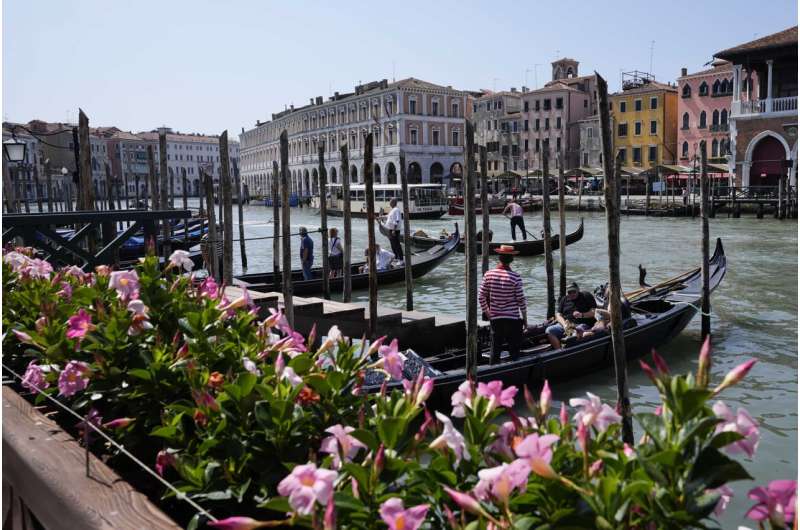
Away from the once-maddening crowds of St. Mark's Square, tiny Certosa island could be a template for building a sustainable future in Venice as it tries to relaunch its tourism industry without boomeranging back to pre-pandemic day-tripping hordes.
Private investment has converted the forgotten public island just a 15-minute waterbus ride from St. Mark's Square into a multi-faceted urban park where Venetians and Venice conoscenti can mix, free from the tensions inherent to the lagoon city 's perennial plague of mass tourism.
"This is the B-side of the Venetian LP," said Alberto Sonino, who heads the development project that includes a hotel, marina, restaurant and woodland. "Everyone knows the first song of the A-side of our long-play, almost nobody, not even the most expert or locals, know the lagoon as an interesting natural and cultural environment.''
It may be now or never for Venice, whose fragile city and lagoon environment alike are protected as a UNESCO world heritage site. Citing overtourism, UNESCO took the rare step this week of recommending Venice be placed on its list of World Heritage in Danger sites. A decision is expected next month.
After a 15-month pause in mass international travel, Venetians are contemplating how to welcome visitors back to its picture-postcard canals and Byzantine backdrops without suffering the past indignities of crowds clogging narrow alleyways, day-trippers picnicking on stoops and selfie-takers crowding the Rialto Bridge.
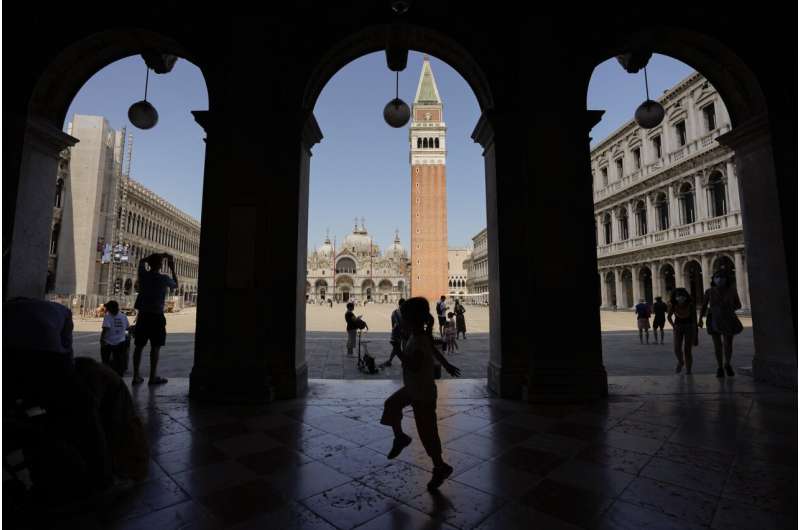
The recommendation by UNESCO's World Heritage Center took into account mass tourism, in particular the passage of cruise ships through the historic center, a steady decline in permanent residents as well as governance and management problems.
"This is not something we propose lightly,'' Mechtild Roessler, director of the World Heritage Center, told AP. "It is to alert the international community to do more to address these matters together."
Veneto regional officials have submitted a plan for relaunching the tourism-dependent city to Rome that calls for controlling arrivals of day-trippers, boosting permanent residents, encouraging startups, limiting the stock of private apartment rentals and gaining control over commercial zoning to protect Venetian artisans.
The proposal, submitted in March, aims to make Venice a "world sustainability capital," and hopes to tap some of the 222 million euros ($265 million) in EU recovery funds to help hard-hit Italy relaunch from the pandemic.
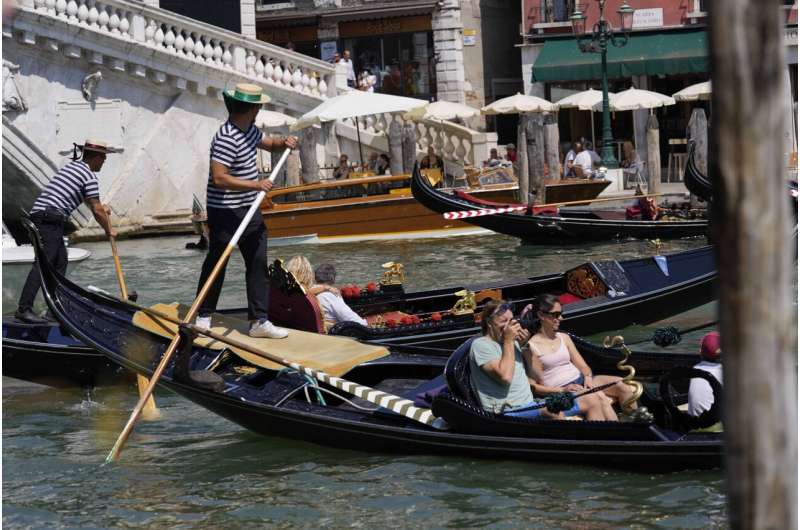
"Venice is in danger of disappearing. If we don't stop and reverse this, Venice in 10 years will be a desert, where you turn the lights on in the morning, and turn them off in the evening,'' said Nicola Pianon, a Venice native and managing director of the Boston Consulting Group whose strategic plan for Venice informed the region's proposal.
The proposal responds to Venetians' urgency to reclaim their city from the mass tourism that peaked at some 25 million individual visitors in 2019, and stanch the exodus of 1,000 Venetians each year. It envisions investments of up to 4 billion euros to attract 12,000 new residents and create 20,000 new jobs.
As much as Venetians groan at the huge tourist flows, the pandemic also revealed the extent to which the relationship is symbiotic.
Along with lost tourist revenue, Venetians suffered a drastic reduction in public transport, heavily subsidized by tourist traffic. Even city museums could not afford to reopen to residents when lockdowns eased.
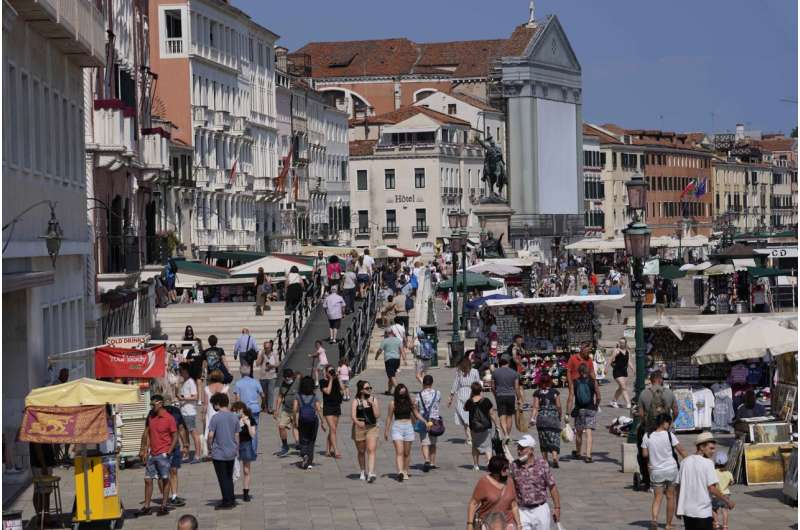
"Venice without tourists became a city that could not serve its own citizens,'' said Anna Moretti, an expert in destination management at Venice's Ca' Foscari University.
The pandemic paused the city's plans to introduce a day-tripper tax last year on visitors who sleep elsewhere—80% of the total tourist footfall.
Some 19 million day-trippers visited in 2019 , spending just 5 euros ($6) to 20 euros each, according to Boston Consulting. On the other side of that equation, the 20% of tourists who spend at least one night in Venice contribute more than two-thirds of all tourist revenue.
A reservation system with an access fee is expected to launch sometime in 2022 to manage day visitors.
With an eye on monitoring daily tourist arrivals, the city set up a state-of-the-art Smart Control Room near the main railroad bridge last year that identifies how many visitors are in Venice at any moment using cell-phone data that also reveals their country of origin and location in the city.
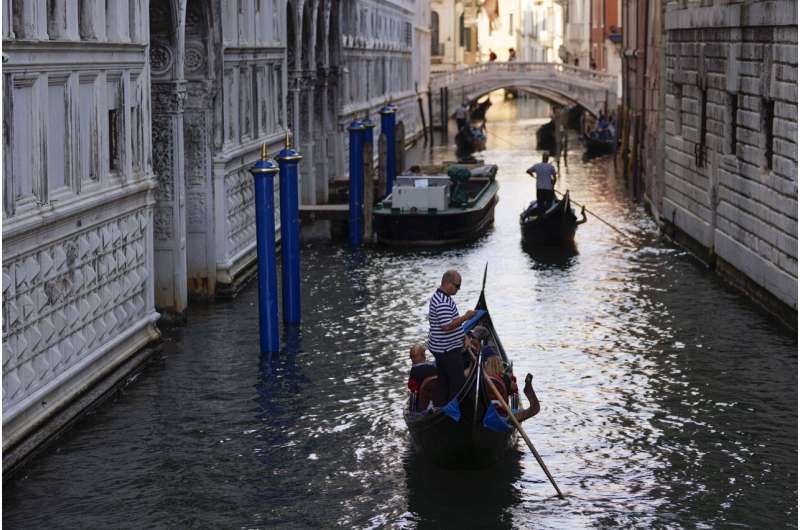
The technology means that future reservations can be monitored with QR codes downloaded on phones, without the need to set up check points. Pianon said the plan is feasible in a city like Venice, which has a limited number of access points and is just 5 square kilometers (2 square miles) in area.
Relaunching more sustainable tourism in Venice would require diverting tourists to new destinations, encouraging more over-night stays, discouraging day trips and enabling the repopulation of the city with new residents.
Much could go wrong. Tourist operators are desperate for business to return, and there is a pent-up global desire to travel. In addition, many changes being sought by regional and city officials must be decided in Rome, including any limits on commercial zoning or Airbnb rental properties.
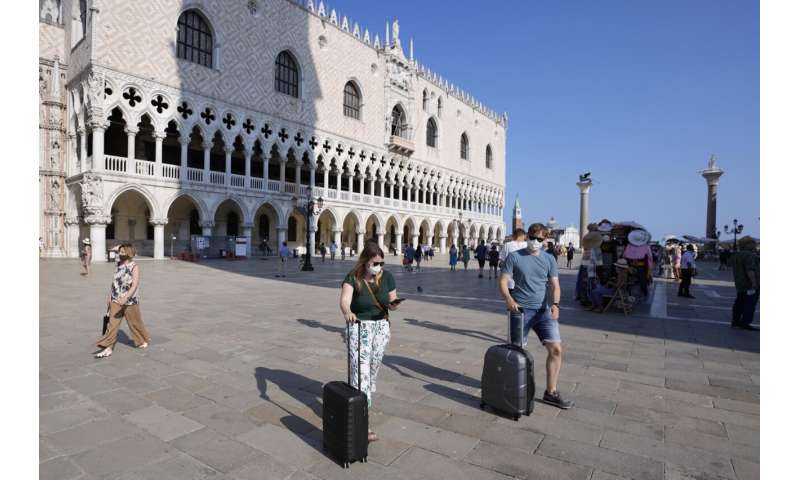
"I think the level of dystopia that we had reached was of such a scale that there has to be a reaction,'' said Carlo Bagnoli, head of an innovation lab, VeniSia, at Ca Foscari University. "There are many projects emerging from many places."
Certosa island, after more than a decade, is still a work in progress, but its success is in the numbers: 3,000 visitors each weekend.
Sonino sees another 10 public sites in the lagoon with redevelopment potential, including former hospitals, abandoned islands and military bases.
He blames Venetians themselves for the city's predicament, being long on talk, short on action. But he feels the pandemic—coupled with the world's abiding interest in Venice's future—might just be the push the city needs to change.
"I prefer to hope that we catch the opportunity. Carpe diem is not only a slogan but an opportunity,'' Sonino said. "We need a lot of ideas and a lot of passion to take Venice from the past to the future."
© 2021 The Associated Press. All rights reserved. This material may not be published, broadcast, rewritten or redistributed without permission.
Explore further
Feedback to editors

Are cows pickier than goats? Answers from innovative large-scale feeding experiments from 275 years ago
12 minutes ago

Research predicts rise in tropical hydraulic failure
31 minutes ago

Human genome stored on 'everlasting' memory crystal

Scientists say there is enough evidence to agree to global action on microplastics
42 minutes ago

Study charts how Earth's global temperature has drastically changed over the past 485 million years, driven by CO₂

When ions go hiking: New insights into solvation kinetics at electrocatalyst surfaces

Scientists unearth key clues to cuisine of resident killer whale populations

NASA develops process to create very accurate eclipse maps

Fossil site in Massachusetts reveals 320-million-year-old ecosystem
2 hours ago

Volcanoes may help reveal interior heat on Jupiter moon
Relevant physicsforums posts, the secrets of prof. verschure's rosetta stones.
Sep 12, 2024
Why does crude oil seep out of the ground on this beautiful Caribbean Island?
Sep 7, 2024
Should We Be Planting More Trees?
Alaska - pedersen glacier: landslide triggered tsunami.
Aug 23, 2024
Iceland warming up again - quakes swarming
Shiveluch volcano erupts on kamchatka peninsula.
Aug 18, 2024
More from Earth Sciences
Related Stories

Cruise ships restart in Venice, bring environmental protests
Jun 6, 2021

Thousands demonstrate against cruise ships in Venice
Jun 8, 2019

Devastated Venice braced for third major flood
Nov 17, 2019

Venice canals clear as city tourist-free under coronavirus
Mar 18, 2020

Image: Deserted Venetian lagoon
Apr 15, 2020

Venice calls European port cities to arms over cruise ships
Aug 1, 2019
Recommended for you

Tropical cyclone intensity exacerbated by increasing depth of ocean mixed layer, finds study
6 hours ago

Lake ice quality degrading as planet warms—skaters, hockey players, ice truckers on thin ice

How humans are affecting the Northern Hemisphere's wind patterns
3 hours ago

Explaining dramatic planetwide changes after world's last 'Snowball Earth' event
4 hours ago
Let us know if there is a problem with our content
Use this form if you have come across a typo, inaccuracy or would like to send an edit request for the content on this page. For general inquiries, please use our contact form . For general feedback, use the public comments section below (please adhere to guidelines ).
Please select the most appropriate category to facilitate processing of your request
Thank you for taking time to provide your feedback to the editors.
Your feedback is important to us. However, we do not guarantee individual replies due to the high volume of messages.
E-mail the story
Your email address is used only to let the recipient know who sent the email. Neither your address nor the recipient's address will be used for any other purpose. The information you enter will appear in your e-mail message and is not retained by Phys.org in any form.
Newsletter sign up
Get weekly and/or daily updates delivered to your inbox. You can unsubscribe at any time and we'll never share your details to third parties.
More information Privacy policy
Donate and enjoy an ad-free experience
We keep our content available to everyone. Consider supporting Science X's mission by getting a premium account.
E-mail newsletter
Combatting Overtourism in Italy: How Unexpected Italy is Leading the Charge

As peak summer travel season 2024 approaches, overtourism in Italy has become a hot topic, particularly in iconic destinations like Rome, Venice, Florence, Milan, and Naples. Unexpected Italy , an innovative startup, is at the forefront of addressing this issue by promoting lesser-known destinations. This article delves into their mission, recent initiatives, and the broader impact on sustainable tourism in Italy.
The Overtourism Challenge
Overtourism in Italy is a pressing issue, with 70% of tourists concentrated in just 1% of the country. According to The Data Appeal Company, five nationalities make up 55% of foreign stays: Americans (15%), Germans (12%), French (11%), British (10%), and Canadians (7%). This heavy concentration puts immense pressure on infrastructure, local communities, and the environment in popular cities.
Unexpected Italy: A Solution for Sustainable Tourism
Unexpected Italy, founded by Elisabetta Faggiana and Savio Losito , aims to redistribute tourist traffic by highlighting “unexpected” destinations. Their approach allows tourists to immerse themselves in local communities, supporting small businesses and experiencing authentic Italian culture.
“We propose less traveled places, those of real life,” explains Elisabetta. “This way, tourists can truly immerse themselves in local communities without overwhelming iconic sites.”

Innovative Initiatives and Global Recognition
From June 26 to 29, 2024, Unexpected Italy will present its project at the Fribourg Entrepreneurship Forum. This event, held at the United Nations Palace and the School of Management Fribourg (HEG-FR), focuses on innovation, sustainability, and digital transformation. Unexpected Italy’s participation follows their success at the NanoValbruna event, where they represented Italian sustainable innovation.
“We will present our solution to redistribute tourism throughout the national fabric, to try to reverse the trend of overtourism,” says Elisabetta. “We will discuss the economic, environmental, and social benefits of valorizing territories that start from people and independent businesses.”
Experiencing Italy Beyond the Icons
Savio emphasizes that Unexpected Italy offers more than traditional guided tours. “We offer the human experience of a territory and its people. Tourists can see artisans at work, taste local products, and participate in local festivals or markets, fully immersing themselves in the community.”
Elisabetta and Savio’s journey began with “Unexpected London,” which offered urban experiences in the real London. After gaining recognition across Europe, they founded the tech-travel startup in Bari. Their mission is to develop a travel ecosystem that promotes authentic experiences and supports independent businesses.
The Unexpected Italy Manifesto
The founders have outlined their principles in a manifesto, emphasizing responsible tourism, economic, social, and environmental contributions to local life, and the promotion of sustainable practices. Here are some key points:
- Transforming Tourism for Good : Tourism should benefit the economy, environment, and local communities while preserving cultural heritage.
- Awareness and Responsible Travel : Increase awareness of mass tourism’s damage and promote responsible travel.
- Supporting Local Businesses : Highlight and support local agriculture, artisanal production, and traditions.
- Encouraging Slow Tourism : Promote slow, immersive travel using eco-friendly transportation.
- Supporting Local Causes : Allocate part of the revenue to local organizations that support small businesses, the environment, and cultural heritage.
- Collaboration and Networking : Help independent businesses collaborate to create meaningful projects and position Italy as a leader in responsible tourism.
- Accessible Travel : Ensure accessibility for all travelers, including those with specific needs.
- Sustainable Energy Choices : Focus on clean and renewable energy sources for all associated businesses.
- Technology for Sustainable Tourism : Use technology and AI to promote sustainable tourism practices and support local small businesses year-round.
Looking Ahead: The Unexpected Italy App
Unexpected Italy is set to launch a new app, described as a “geolocalized and highly targeted ‘Lonely Planet’ 3.0.” This app will allow travelers to create personalized itineraries based on their interests, connecting them with unique, off-the-beaten-path destinations.
Elisabetta and Savio’s Commitment
As digital nomads, Elisabetta and Savio scout for authentic experiences across Italy. They spend three to four months in each region, evaluating approximately two thousand structures over the next 24 months. Their goal is to choose destinations that represent the authentic soul of Italy.
Join the Movement
Unexpected Italy’s mission is to transform tourism into a force for good. By promoting lesser-known destinations and supporting local communities, they offer a sustainable alternative to overtourism. To learn more about their initiatives and explore authentic Italian experiences, visit their website at www.unexpected-italy.com .

I agree entirely with this. We go to Varese a few times now, Como and Garda. However, I do like Varese as it is a central town, food and bars. Nice evening life and lovely people. You can drive to busier more tourist destinations if required but personally I would avoid Milan, Rome, Pisa and the major destinations as I feel these are more for hardened tourists and may not give you the authentic local Italian culture. And that’s why you visit.
Thanks for discovering Live in Italy Magazine and reading the article. We hope to eventually have a section dedicated to sustainable travel.
Leave a Reply Cancel reply
Your email address will not be published.
Save my name, email, and website in this browser for the next time I comment.
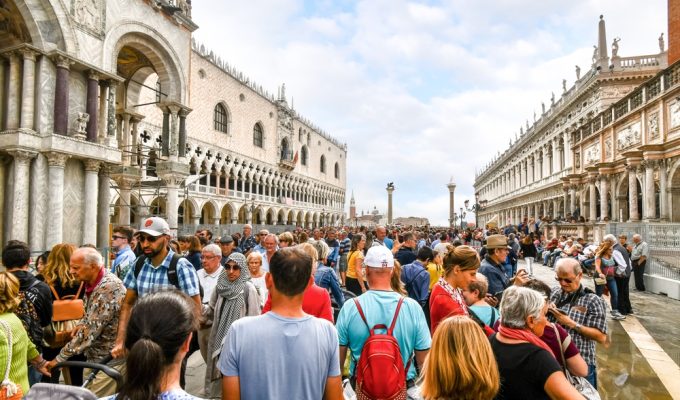
Venice Access Fee: Navigating New Measures to Preserve the City’s Unique Charm

Via Francigena: Between Spiritual Journey and Slow Travel

Visit Sicily: A Masterclass in Rural Tourism and Experiential Travel
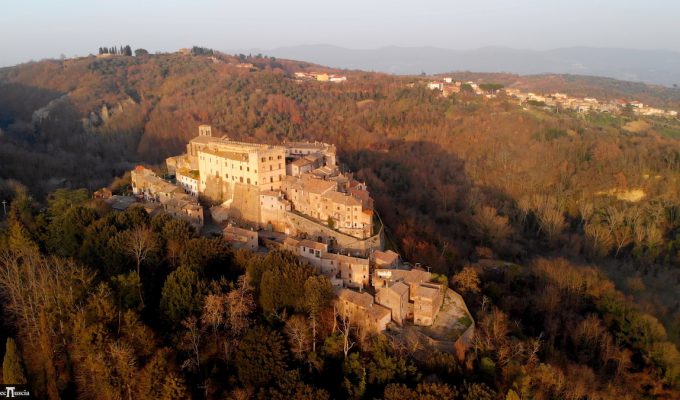
Experiences That Will Fill Your Heart in Roccalvecce
Build your authentic life in Italy! Live in Italy Magazine is an experiential lifestyle news site dedicated to anyone who has or will make Italy their home away from home. Read stories from expats and Italians. Named the Best Italy Magazine by Feedspot!
We feature in-depth articles and interviews covering:
- Food & Wine
- Design, Art, & Culture
- Real Estate, Hotels/Resorts & Long-Term Rentals

Thank you for your support!
Our Contributors:
Lisa Morales, Editor-in-Chief (Miami) Christine Cutler, Travel Editor (St. Petersburg, FL) Lorenzo Diamantini, Food and Wine Editor (Gubbio) Adriana Suarez, Top 8 Editor (Miami) Bel Woodhouse, Contributing Editor (Cozumel, Mexico) Giulia Marchetti, Contributing Editor (Viterbo) Angie Kordic, Visual Arts Contributing Editor (Stockholm, Sweden) Feuza Reis, Breaking News Contributor (Miami) Patrizia Vigolo, Contributing Wine Editor (Vicenza) Natalia Bell. Food Contributor (Edinburgh, Scotland) Emma Prentice (Ferrara/UK), Contributor Justin Patulli (Ottawa, Canada), Contributing Editor Annalucia Scotto Di Clemente (Rome), Contributing Editor Valeria M. (Bologna), Contributor Sandra Diaz-Velasco (Miami), Interior Design & Architecture Contributor Carrie Convilli (Venice), Veneto Events Correspondent
Al Esper Graphic Design: Digital Edition Art Director (Tennessee) SQLHardhat : Aaron Morales, Website Design and SEO (Miami) Visual Popcorn : John Craven, Video Editor (Miami) Colls Fine Art Photography : Armando Colls, Contributing Photographer (Miami) Sabrina Negro, Translator (Piemonte) Giulia Ferro, Subtitler EN/IT (San Michele all’Adige)
Sales: [email protected]
Submit Your Press Release: lisa @ liveinitalymag.com
Guest Contributors:
Guest Contributor applicants should have a good understanding of WordPress. Email links to recent articles along with your social media handles to: lisa @ liveinitalymag.com.
Privacy Overview
You can see how this popup was set up in our step-by-step guide: https://wppopupmaker.com/guides/auto-opening-announcement-popups/
Travel Tips
- Attractions
- Things to do
- Food & Wine
- Art & Culture

Rest of the world
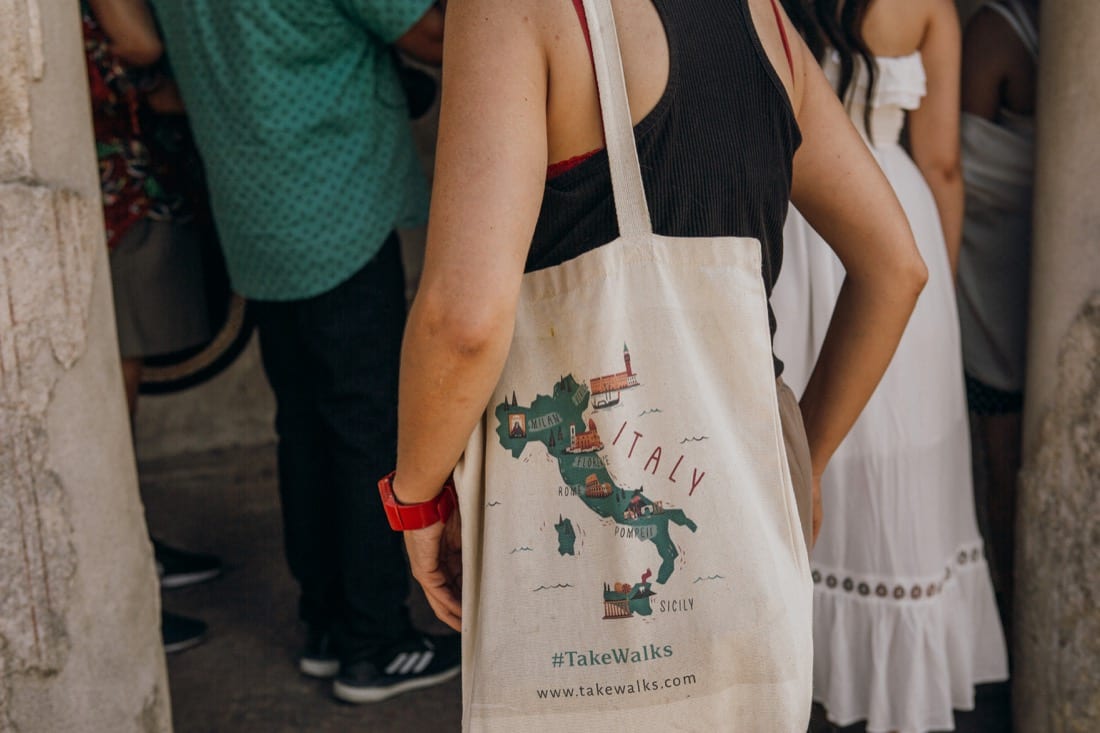
Ecotourism In Italy: Our Top 10 Ethical Travel Tips
- Planning your trip
September 12, 2023
It’s no secret that at Walks, we’re passionate about promoting sustainable travel and ecotourism in Italy. Our tours support the hallmarks of responsible travel, like getting off the beaten path , promoting local businesses, walking whenever possible , and increasing cultural awareness.
But taking a tour with us is not the only way to ‘go green’ and support local! If you love Italy and want to make your trip as beneficial for the country as possible, here are some tips to use in your sustainable travel plan .
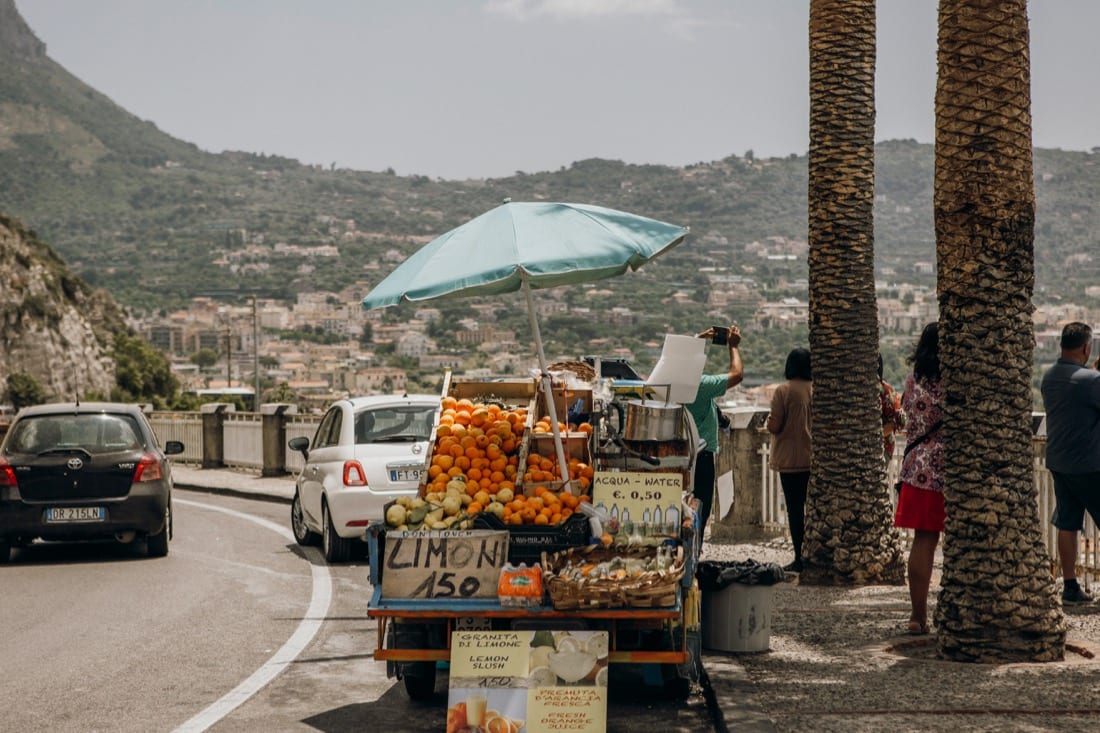
A fruit vendors sells their bounty of citrus along the Amalfi Coast.
Table of Contents
How to be an eco-friendly tourist in Italy
Avoid fast food.
Choose to eat local, organic produce instead. If you’re not too confident about the food in a new city, opt to take a food tour with a local guide who can show you some of the best spots to try during your stay. Even more importantly, your guide can help point out which tourist traps to avoid!

Try the best of the best when you join a food tour with a local insider!
Don’t print your travel documents
Where possible – for flights, tours and hotel stays – avoid unnecessary use of paper by keeping your documents downloaded to your phone.
Carry reusable water bottles at all times
Avoid purchasing plastic water bottles when traveling. Fill up at drinking fountains or ask a member of staff to top you up before you leave a cafe, restaurant, or hotel. Where unavoidable, choose glass bottles or opt for larger plastic bottles instead of smaller individual ones.
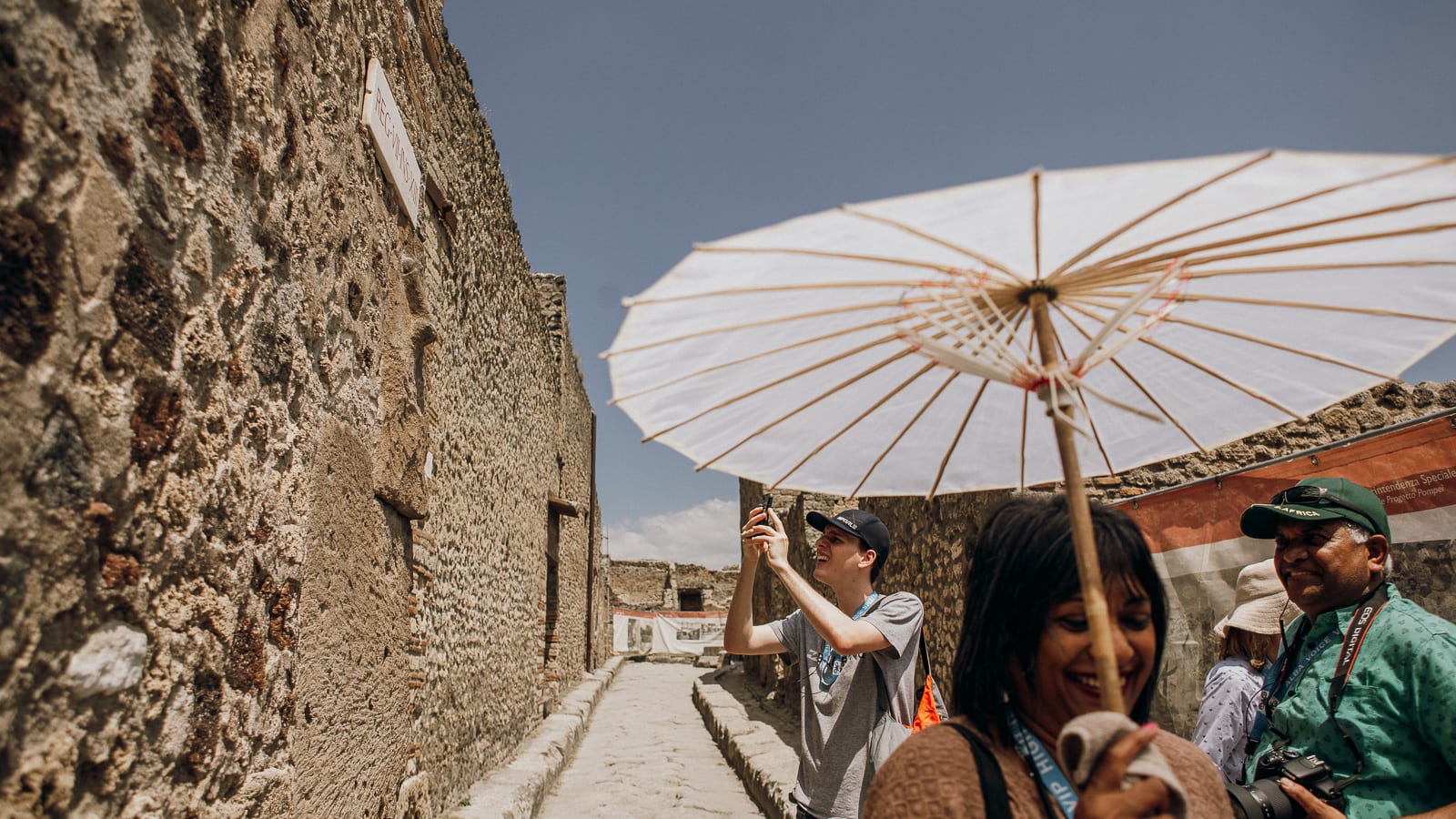
Places like Pompeii offer little shade, so make sure you plan ahead. And using a reusable water bottle is one of the best ways to promote ecotourism in Italy.
Reuse your hotel towels
This one is pretty straight forward and requested by most hotels over the world; help to reduce water waste by reusing your towels.
Seek out lesser-known areas
As well as visiting the highlights of a city, try to seek out some of the lesser-known neighbourhoods to spend an evening somewhere different – or get out of the city for a few hours completely (e.g. take a trip outside Rome for an alternative look into the lives of the Popes , or visit an authentic working farm outside of Florence on a day trip to Tuscany).
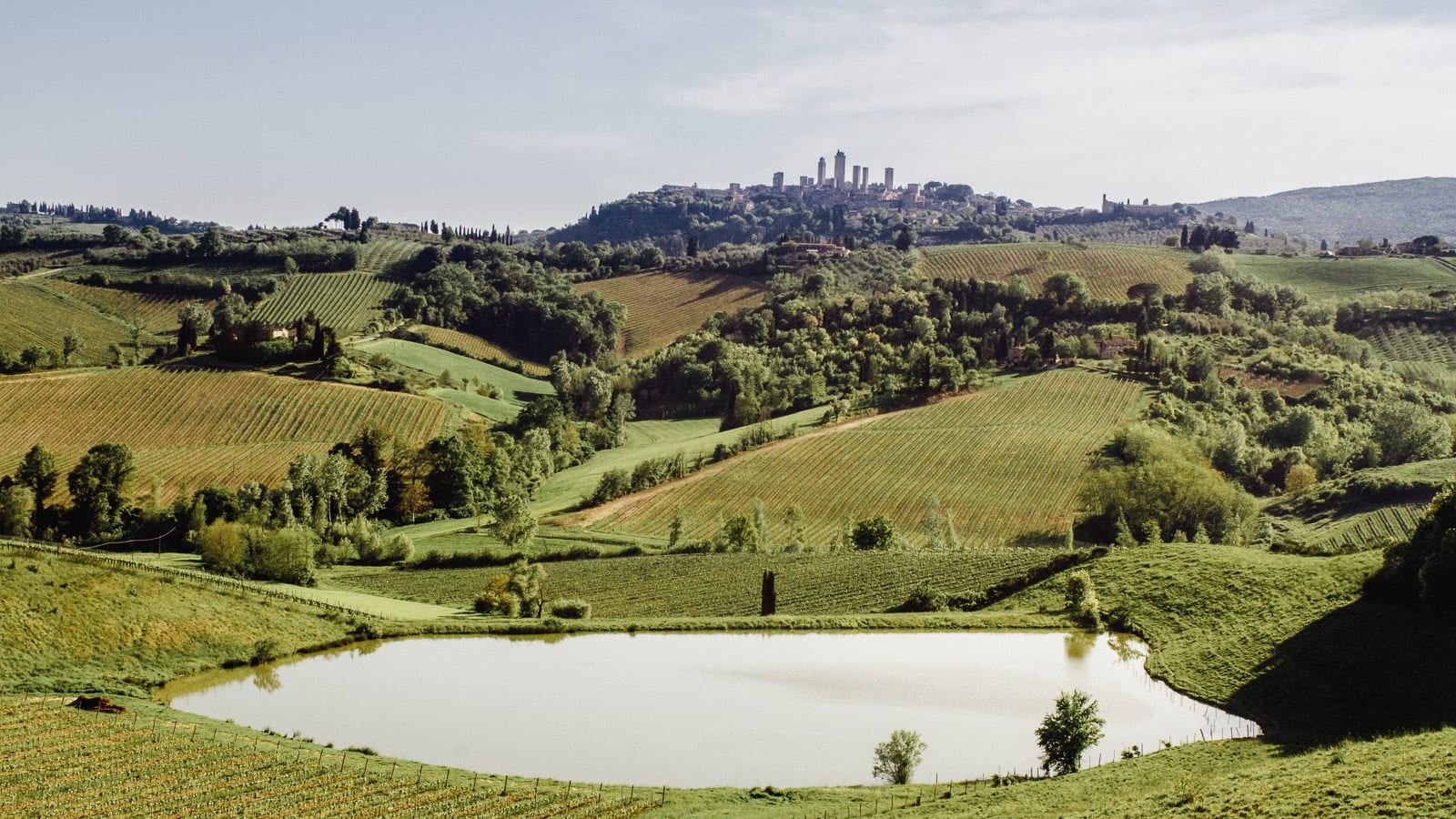
Visiting Florence? Get out and explore the Tuscan countryside, too!
Separate trash in your hotel room
While most hotels around the world ask you to consider reusing your towels, many don’t offer guidelines on waste disposal. Nevertheless, make it easier for staff to recycle by separating your general waste from your paper and plastics. And always set glass to the side.
Say no to takeaway coffee
One thing many tourists will notice about Italy is that locals don’t zoom around in the morning clutching a paper coffee cup. However, recent visitors may have noted that takeaway coffee is slowly springing up as an option in some cafes. Enjoy your coffee at the bar – it’s more of an authentic experience, anyway!
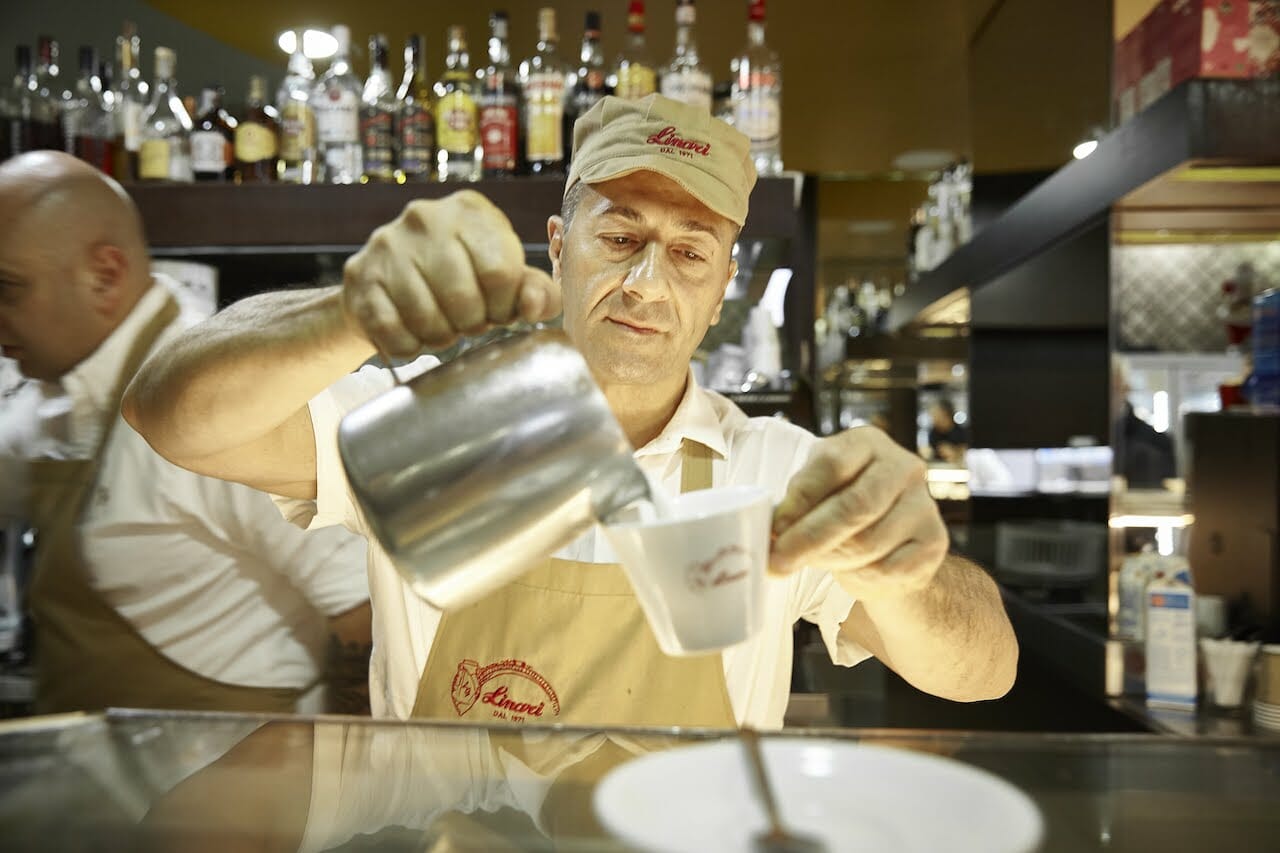
Enjoy a quick coffee like a local – at the counter!
Travel slow
Take your time getting to know a city and spread out your time there. Visit the most popular areas just once if possible, following rules the city has set out. For example, think twice about buying lots of little plastic souvenirs and DON’T attach love locks to bridges.
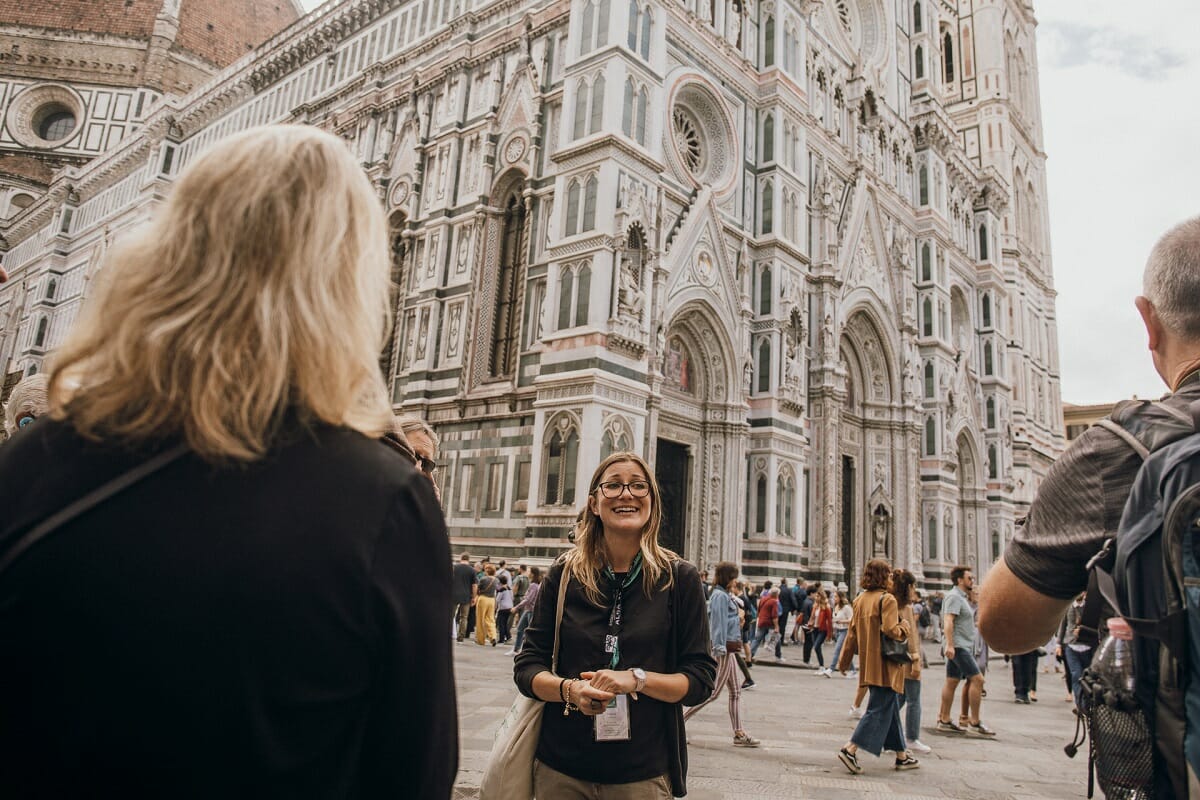
If you’ve seen Firenze’s Duomo up close, venture off the beaten path by visiting Piazzale Michelangelo or picnicing at one of the many parks in Florence .
Use public transportation
We’re huge fans of public transportation, such as using buses and trains to get around Italy . But remember, when possible, getting around on foot is best!
Think ethically at attractions
Major attractions often feel the brunt of over-tourism, however nobody should feel bad about wanting to visit the smallest country in the world , or for dreaming of walking through the Gladiator’s Gate: Special Access Colosseum Tour with Arena Floor . There are ways however of treading lightly; Don’t litter (of course), get to know, and respect, the history of the attraction by taking a tour with a local, professional guide or opt to see the attraction out of hours (such as being alone in St. Mark’s Basilica after-hours ).
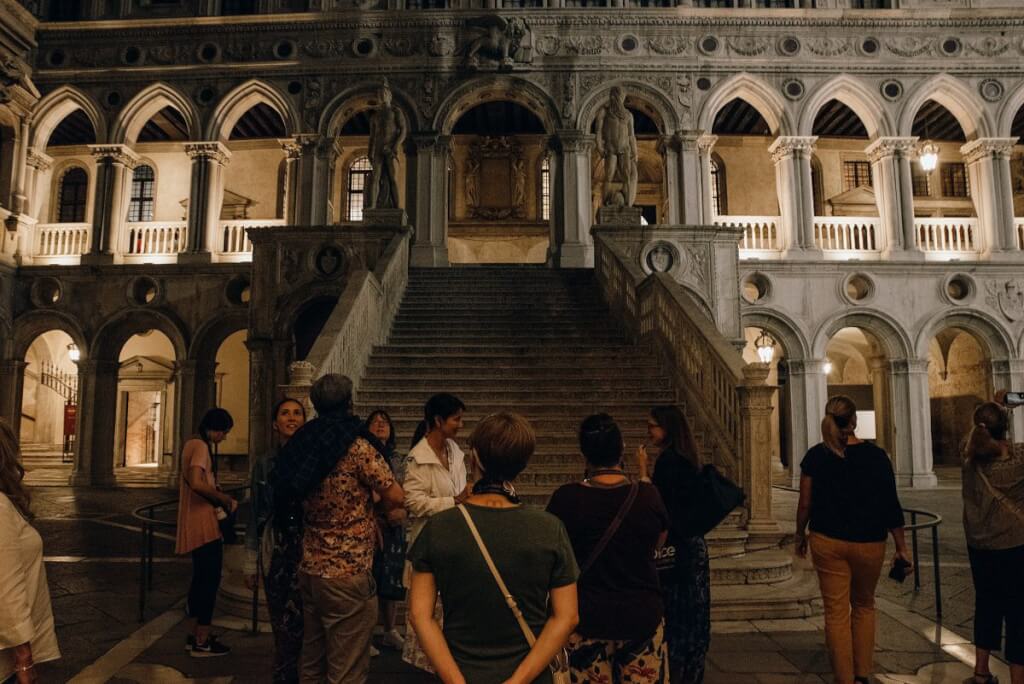
The Doge’s Palace courtyard leads to one of the most amazing museums in all of Venice – and it’s even more impressive after dark!
Update notice: This article was updated on September 12, 2023.

by Karen Birney
Book a tour.

Pristine Sistine - The Chapel at its Best
1794 reviews

Premium Colosseum Tour with Roman Forum Palatine Hill
850 reviews

Pasta-Making Class: Cook, Dine Drink Wine with a Local Chef
121 reviews

Crypts, Bones Catacombs: Underground Tour of Rome
401 reviews

VIP Doge's Palace Secret Passages Tour

Legendary Venice: St. Mark's Basilica, Terrace Doge's Palace
286 reviews
Stay up to date with travel tips, local insights and all things Italy on our social channels!
Subscribe to our Newsletter
Get curated Italy travel tips delivered to your inbox!
Your browser is out-of-date!
Update your browser to view this website correctly. Update my browser now

- Business travel
- Italian food
- Train world
- Travel ideas
- Buy your tickes
- Destinations & Timetable
- Italo Go Services
- Travel with Italo
- Loyalty Programme
Italoblog » Travel ideas » Sustainable Travel in Italy: Eco-Friendly Tips and Destinations
Sustainable Travel in Italy: Eco-Friendly Tips and Destinations
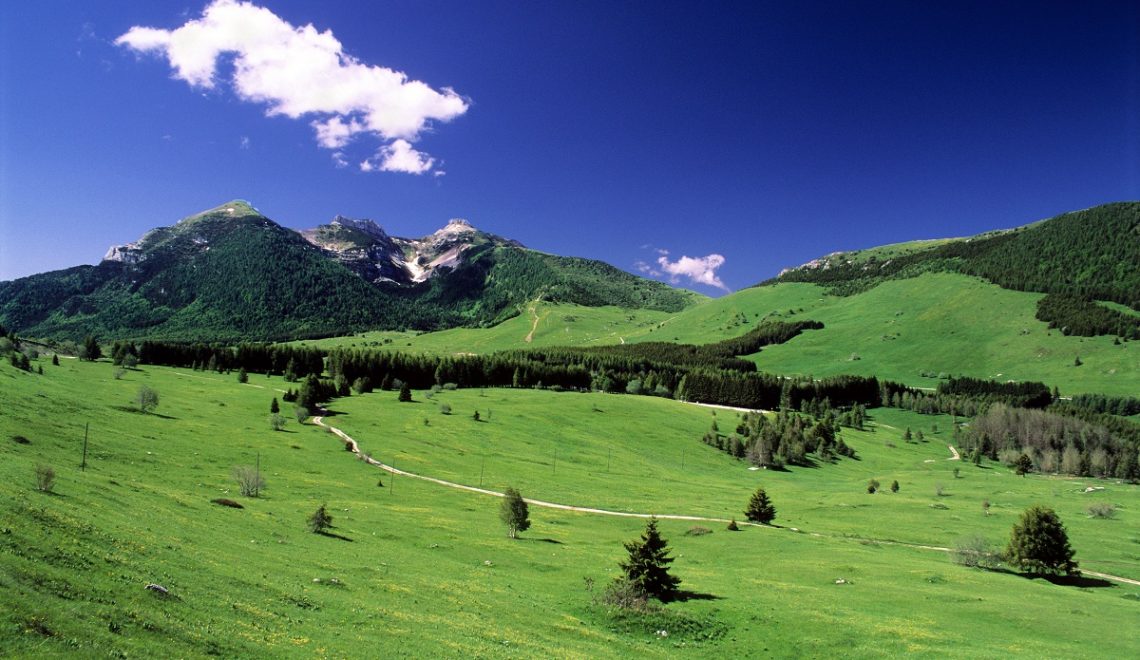
Italy is leading in sustainable travel, preserving its cultural heritage and natural beauty while accommodating eco-conscious tourists. Options range from Tuscany’s vineyards to the Amalfi coast, promoting low-carbon tourism.
Embracing Sustainable Travel in Italy
South tyrol – trentino alto adige, maremma – tuscany, gran sasso – abruzzo, cycling holidays and walking tours, slow tourism and slow food, advancing towards a greener future: italy’s sustainable initiatives.
In recent years, Italy has been at the forefront of sustainable travel, striving to preserve its rich cultural heritage and pristine natural environments while accommodating tourists. Travellers today are more environmentally conscious than ever, and Italy offers a plethora of options for those seeking to minimise their carbon footprint while exploring the breathtaking beauty and historical wealth of the country. From the lush vineyards of Tuscany to the crystal-clear waters of the Amalfi coast , Italy is turning the tide towards sustainable tourism practices.
Exploring the Best of Green Tourism in Italy
South Tyrol – Trentino Alto Adige, with its alpine landscapes and verdant valleys, is a leader in sustainable tourism initiatives. The region’s extensive national parks and protected areas are meticulously maintained to ensure ecological balance and biodiversity conservation . The local government actively promotes green energy usage and sustainable infrastructure, making it an exemplary eco-tourism destination. Tourists can explore the Dolomites, recognised as a UNESCO World Heritage site, using environmentally friendly public transport. The area also offers eco-lodges and hotels that use renewable energy sources , providing a low-impact yet luxurious accommodation option for environmentally-aware travellers.
Reach Trento with Italo’s high-speed train
Maremma in Tuscany is a haven for green tourism , showcasing vast stretches of untouched natural beauty and a commitment to environmental preservation. The region’s approach to tourism is centred on sustainability, with numerous protected areas and initiatives aimed at conserving its rich flora and fauna.
Maremma is particularly renowned for its organic agritourism farms, where visitors can stay and participate in the cultivation and harvesting of organic produce. This immersive experience not only connects travellers with the traditional Tuscan lifestyle but also educates them on the importance of sustainable agricultural practices.
Additionally, Maremma’s eco-friendly accommodations often feature energy-efficient systems and waste reduction programs, further enhancing the area’s appeal to eco-conscious tourists.
Visit the beauties of Tuscany with Italo
Gran Sasso in Abruzzo is not just a destination, it’s an experience that encapsulates the essence of Italy’s rugged natural beauty and commitment to environmental stewardship. Dominated by the imposing Gran Sasso massif, the area includes one of Italy’s largest national parks, Parco Nazionale del Gran Sasso e Monti della Laga , which serves as a sanctuary for numerous species of wildlife and native flora. Eco-resorts here are designed to blend seamlessly with the landscape, minimising their ecological footprint while providing guests with unique opportunities to engage with nature.
The sustainable tours offered in the region emphasise education about the local ecosystem and promote conservation efforts, including guided wildlife watching, botanical hikes, and even glacial studies. These initiatives help to foster a deep connection between visitors and the natural world , encouraging the continued protection of these invaluable environments.
Experiencing Italy Through Sustainable Tours

Italy is a paradise for those who prefer slow and green tourism. Cycling holidays and walking tours are excellent ways to experience Italy at a slower pace, reduce emissions, and create minimal environmental impact. Routes through scenic areas like the rolling hills of Umbria or the coastal paths of Sicily offer immersive experiences that are both eco-friendly and enriching.
Ciclovia Vento: From Venice to Turin
The Vento Cycle Route, also known as the Venice-Turin cycle path, follows a network of cycling trails and quiet country roads, offering cyclists a leisurely journey through the Veneto and Piedmont regions. Traversing diverse landscapes, from the serene waterways of Venice to the rolling hills of Piedmont, this route showcases the beauty and diversity of northern Italy.
Travel by high-speed train from Venice to Turin
Adriatic cycle route: from trieste to puglia.
The Adriatic Cycle Route traces the coastline of the Adriatic Sea, meandering through picturesque landscapes, charming towns, and historic sites. It connects the city of Trieste to Santa Maria di Leuca and includes ten cycle paths.
The Adriatic Cycle Route is about 1300 km (807,7 mi ) long in total, crossing the regions of Friuli Venezia Giulia, Veneto, Emilia Romagna, Marche, Abruzzo, Molise, Puglia. With its gentle terrain and well-marked paths, it’s suitable for cyclists of all levels , from leisure riders to seasoned enthusiasts.
Travel from and to Trieste with Italo’s high-speed train
If you don’t want to ride them all, but start from a specific point on the Italo trains, you can take your bike with you to the city of departure.
Eco-Friendly Accommodation and Dining in Italy
The slow food movemen t, which started in Italy, champions locally sourced and organic foods, which is a staple of the Italian culinary experience . Eco-friendly accommodation in Italy enhances this concept by providing meals prepared with ingredients from the owners’ own gardens or local farms.
This approach not only supports local agriculture but also cuts down on food miles, aligning with the principles of low-impact travel.
Italy’s commitment to sustainability extends beyond travel alone. Renewable-energy hotels are emerging across the country, harnessing solar and wind power to reduce their environmental impact. Furthermore, Italy’s conservation projects protect its extensive biodiversity and cultural heritage , ensuring that they endure for future generations.
Sustainable dining in Italy is now more prevalent, with restaurants and cafes emphasising zero-waste practices and sourcing ingredients sustainably. Meanwhile, Italy’s eco-friendly transport options , including extensive cycling paths and electric public transport, make it easier for travellers to explore without contributing to pollution.
Italy’s approach to sustainable travel is not just about reducing negative impacts but is also about creating positive change. Italian eco-villages and sustainable landmarks provide insights into how communities are embracing renewable resources and sustainable living practices. These initiatives are supported by a variety of green travel guides and resources that help travellers make responsible and informed decisions.
You may also be interested in

Italo Newsletter
Discount codes and promotions, other posts.

Discover our guides
- Where to eat in Rome
- Where to eat in Milan
- Where to eat in Naples
- Where to eat in Venice
- Where to eat in Bologna
- Best brunches in Italy
- Traveling with pets
- Best itineraries in Italy
- By train to the sea
- By train to the mountains
- Nature Trails
- Train stations in Italy
Our stations
- Destinations
- Travel Guides

Sustainable and responsible tourism in Italy
)
Jo Williams
- Sustainable travel in Italy
Although the ubiquitous red tape of Italy’s political system can often slow progress, the country has made vast strides in sustainability in recent years.
It’s now easier than ever to explore Italy in a sustainable way with agrotourism, a swathe of km-zero restaurants, and sprawling cycle and walking trails that weave across the country.
Tuscany may be the home of the rural Italian escape, but avoid the crowds and head to one of Italy's other green regions to discover the myriad of opportunities for slow, meaningful travel.
Overtourism in Italy
Italy has struggled with overtourism in the past, resulting in locals calling for restrictions in some areas. After the pandemic, people are rethinking what a holiday in Italy should look like.
Skip Cinque Terre , Tuscany, Rome , Venice and Florence in summer, or maybe just do one and add other nearby lesser known spots to your itinerary.
Slow travel means staying a night or two in a small town instead of just taking a day trip, savouring fresh Italian food, and getting to know the land and the locals instead of ticking attractions off of a checklist.
Green destinations in Italy
Lake Garda has become one of the main green destinations of Italy. Visit the beaches of Gordone, hike the Ponale path, or cycle the Valle Dei Laghi trail. Travelling slowly means there’s plenty of time to take in some natural relaxation at the Colà Hot Springs, enjoy a gastronomic food tour, and taste DOP wines from the region.
Or head to the Emilia Romagna region with its 10 cycle routes (Ciclovie dei Parchi) that roll through the hills of Bologna from the Po Valley to the Apennines.
There’s also the Via Francigena, a pilgrim's path that once led from Canterbury to Rome, which guides you through 145 km of Emilia Romagna’s traditional villages and sweeping mountain passes.
Supporting local businesses and communities
Once only popular in Tuscany, Agritourism farmstay breaks are becoming more popular across Italy. Head to Umbria, Calabria, Sicily and Sardinia to stay with locals and discover enduring traditions, warm hospitality and seasonal home-grown food.
There is also a huge slow food movement in Italy, with ‘KM Zero’ restaurants available in most areas. It makes sense that this global movement has found a real foothold in Italy. Avoid the picture-on-menu tourist traps and seek out better food while supporting local communities and sustainable initiatives.
An easy way to check where food is from is to look out for denominations like DOP on products, as they show that it’s locally produced.
Choosing ethical tours and experiences
Some aspects of Italy are yet to catch up with the rest of the world especially when it comes to animal rights. Global organisations are calling for closures of Italy's five dolphinariums as conditions violate national and European laws (these are Rimini, Oltremare, Acquario di Genova, Fasanolandia and Zoomarine).
Instead, visitors can head to the Pelagos Sanctuary, a marine protected area where visitors can take boat trips to see giant fin whales, sperm whales, Risso’s, striped and bottlenose dolphins.
Sardinia is often missed on a trip to Italy, but it's home to wild landscapes and some fantastic ethical experiences like visiting Europe's last wild horses in Giara di Gesturi.
In Isili, visit archaeological sites of the Nuragic civilization to learn where Sardinia got its name the ‘Island of Giants’.
Respecting local customs and traditions
Putting a lock on a bridge, sticking gum on a wall in Verona, or scribbling some initials on the Colosseum leaves nothing but bad feelings with locals. As with anywhere, respecting the country you are visiting and leaving nothing but memories is a goal for every sustainable traveller.
In Italy, disrespecting food and religion are two ways you can easily upset the apple cart. It's important to always dress appropriately for churches and religious buildings and remain quiet while inside.
When it comes to food, try to pronounce dishes the Italian way; even if you are way off the server will appreciate the effort. Oh and never ask for ketchup!
Minimising impact on the natural environment
When hiking in Italy’s beautiful national parks it’s important to follow the local guidelines to preserve biodiversity as well as the natural beauty. For example, open fires and wild camping are often banned to reduce the risk of wildfires.
Always try to stick to the main trails to avoid damaging flora and fauna, and make sure to check whether swimming is permitted in a lake or river before jumping in.
- Further reading
Visit Italy has some fantastic sustainable itineraries for inspiration for your next trip, from the plateaus of Sardinia to the green valleys of the Trentino-Alto Adige region.
Legambiente Turismo lists hotels, restaurants and farm-stays that meet eco-friendly criteria from environmental associations in Italy.
Planning a trip to Italy? Read our Italy travel guides .
- Introduction
- Staying safe outdoors
- Green destinations
- Road safety
- Ethical tours and experiences
- Local customs and traditions
- Natural environment
Share this article
)
Author - Jo Williams
Jo Williams is a freelance writer with 10 years' experience working in travel and tourism. A Brit who got fed up with the 9 to 5 corporate life, she sold everything to become a full-time wanderer.
Jo has travelled to over 70 countries and worked throughout Europe for a major tour operator. She hopes to inspire you to work less and travel more.
Last Updated 14 March 2024


Sustainable Tourism in Venice: Finding Harmony in the City of Canals
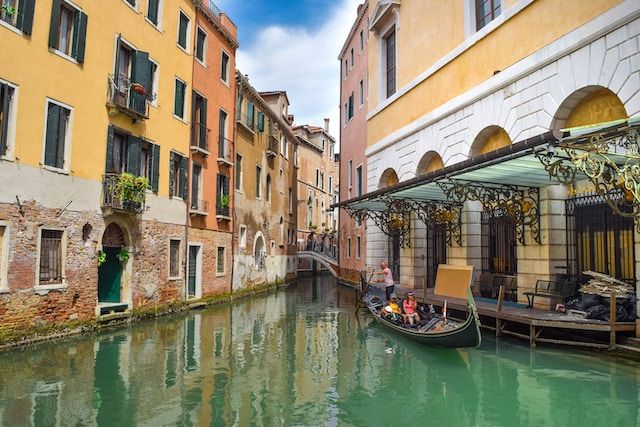
Venice has been attracting millions of visitors every year with its picturesque buildings, winding streets, and enchanting waterways. However, Venice is a fragile city and it is facing a critical challenge: how to preserve its beauty while promoting sustainable tourism .
In this article, we will explore the sustainable issues in Venice, what the municipality is doing to make the city sustainable, and how to visit Venice sustainably.

Sustainable tourism in Venice: let's begin with a definition
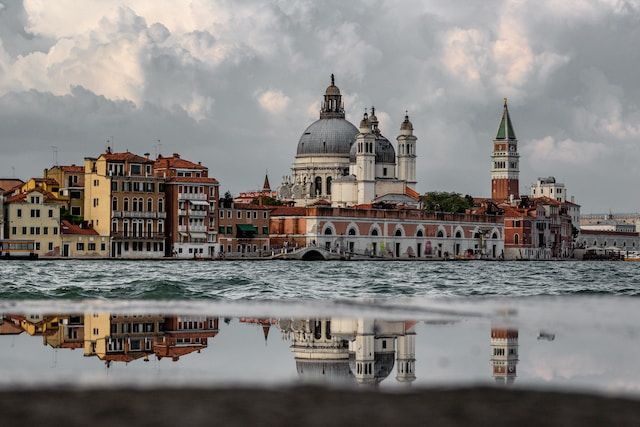
Sustainable tourism refers to a type of tourism that aims to minimize the negative impact of the tourism industry on the environment, local communities, and cultural heritage.
It focuses on preserving natural resources and ecosystems while providing economic benefits to the local community .
Sustainable tourism also aims to promote responsible behavior among tourists and encourage them to adopt sustainable practices.
Sustainable tourism involves several practices such as reducing carbon emissions, conserving natural resources, promoting cultural heritage, and supporting the local economy.
For example, sustainable tourism can involve using renewable energy sources, reducing waste and plastic use, and promoting responsible tourism practices such as respecting local cultures and customs.
The benefits are numerous. It promotes sustainable economic development and provides jobs and income for local communities while preserving the natural environment and cultural heritage. Sustainable tourism also helps to reduce the negative impact of tourism on the environment and ecosystems, which is crucial for the preservation of our planet.
In other words, it is a critical aspect of responsible travel that ensures the long-term sustainability of our planet and communities . By adopting sustainable tourism practices, we can preserve the beauty of our planet and contribute to the well-being of local communities.
Let's now focus on the sustainable tourism in Venice and discover what the city is actually doing to preserve its heritage.
Sustainable Issues in the city
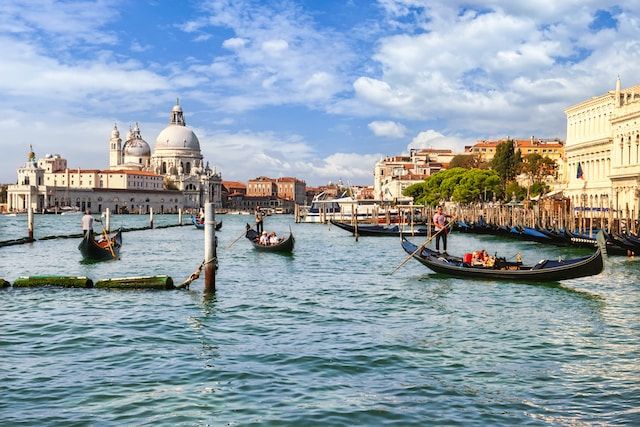
Venice faces several sustainable issues due to its unique location, fragile ecosystem, and the overwhelming number of visitors it receives.
One of the most pressing issues is the impact of mass tourism on the city's fragile infrastructure.
The city's waterways and canals are under constant pressure from the influx of visitors, who often use motorized boats, leading to increased pollution and erosion .
Another issue is the high level of waste generated by tourists, especially during the peak season. The excessive amount of plastic waste, littering, and overflowing trash bins create an eyesore for tourists and locals alike.
Could we say that Venice is a Sustainable City?
Venice, a truly tourism dependent city, is taking several steps to become a sustainable city.
In 2017, for example, the city implemented the "Venice 2030" project , which aims to reduce the environmental impact of tourism while promoting sustainable development.
The project includes measures such as reducing the number of cruise ships, regulating the use of motorboats, and promoting responsible tourism.
The municipality is also investing in renewable energy sources, promoting sustainable mobility, and preserving the city's cultural heritage.
We cannot forget to mention one of the most significant measures introduced in the last years: the ban on large cruise ships in the Venetian Lagoon. The Stop alle Grandi Navi campaign was in fact launched to protest against the negative impact of these ships on the fragile ecosystem and cultural heritage of Venice.
The municipality has also taken steps to regulate the use of motorboats and reduce the number of visitors in the city's historic center.
They are also trying to introduce a tourist ticket system , which would charge tourists for entry into the historical center, with the aim of monitoring daily tourist arrivals and raising funds for the preservation of cultural heritage sites.
These efforts demonstrate the city's commitment to preserving its unique beauty while promoting more sustainable tourism practices .
How to Visit the city Sustainably
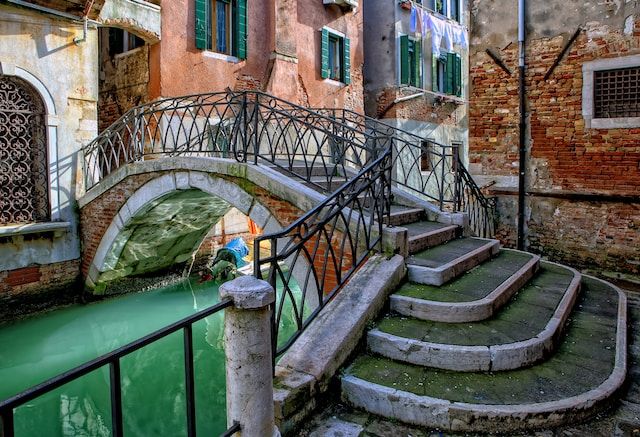
There are several ways to travel around this UNESCO World Heritage site sustainably .
One of the best ways is to use public transportation , such as water buses or the iconic gondolas.
Walking or cycling (where it is possible, like at Lido island) is also a great option to explore the city and its hidden gems.
Choosing eco-friendly accommodations and restaurants that use local and organic products is also an excellent way to support the local economy and reduce the carbon footprint of your visit.
It is also essential to be respectful of the city's cultural heritage and avoid damaging historic buildings or monuments.
Do you know the Detourism Campaign promoted by the municipality?
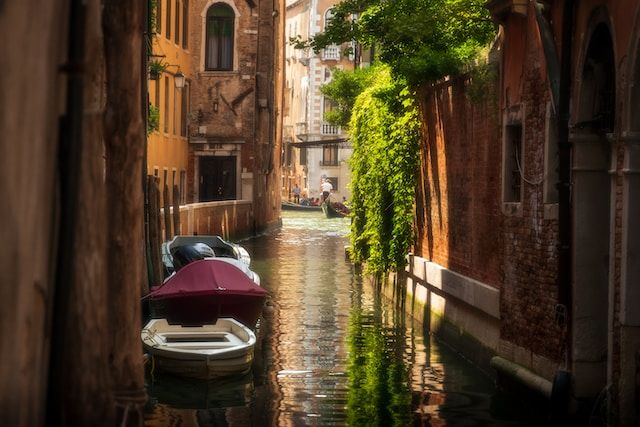
" Detourism " is a movement that encourages travelers to explore off-the-beaten-path destinations and promote sustainable and responsible tourism practices.
This campaign aims to reduce the negative impact of mass tourism on the environment, cultural heritage, and local communities by promoting alternative destinations and sustainable travel practices.
As you have read through the article, Venice has been facing challenges with over tourism for several years, which has led to negative impacts on the environment, cultural heritage, and local communities.
The Detourism Campaign offers an excellent opportunity to promote sustainable and responsible tourism practices in Venice and encourage travelers to discover lesser-known destinations in the region.
The campaign can help reduce the negative impact of mass tourism on the fragile ecosystem of the Venetian Lagoon and preserve the cultural heritage of the city. It encourages travelers to explore alternative destinations, such as the nearby islands, which offer a more authentic and less crowded experience of the region.
Supporting local businesses and choosing sustainable accommodations and tour operators can also help promote responsible tourism practices in Venice!
The campaign is also important because it raises awareness about the impact of mass tourism on the environment and local communities. It encourages travelers to be mindful of their actions and promote sustainable travel practices that benefit both the traveler and the destination.
Overall, the Detourism Campaign is a positive initiative that promotes sustainable tourism practices and encourages travelers to make responsible choices when planning their trips.
In conclusion, Venice is taking important steps towards becoming a sustainable city, but it is also essential for tourists to contribute to this effort by adopting responsible behaviors and choosing sustainable tourism practices.
By visiting Venice sustainably, we can help preserve its unique beauty for generations to come.
Popular tags

Rome is the perfect destination for sustainable tourism
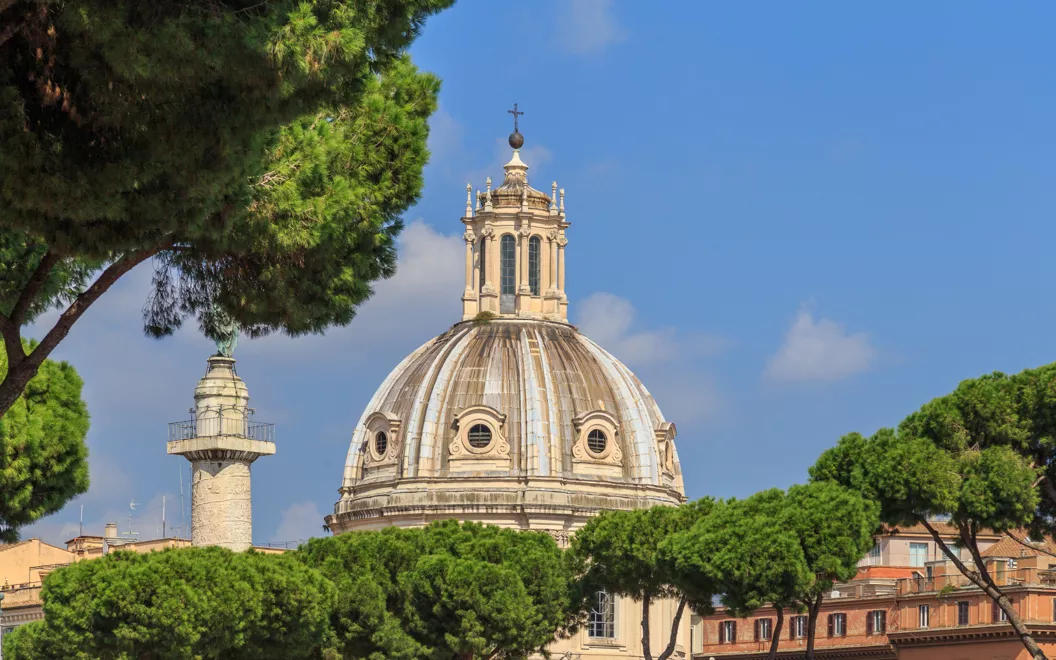
Even our ways of exploring and travelling are adapting to the times and must evolve. Attention to sustainability is at the top of the list of requirements for those who travel, in order to preserve the many treasures that make our Bel Paese unique.
No more wild and irresponsible tourism as in the past, but more respect for territories, cultures, natural areas and traditions that protect the growth of places of interest and their populations. As well as attentiveness on the part of travellers, policies in step with the times that facilitate responsible tourism are also widespread. Rome is an example from which to draw inspiration.
Even our ways of exploring and travelling are adapting to the times and must evolve. Attention to sustainability is at the top of the list of requirements for those who travel, in order to preserve the many treasures that make our Bel Paese unique.
No more wild and irresponsible tourism as in the past, but more respect for territories, cultures, natural areas and traditions that protect the growth of places of interest and their populations. As well as attentiveness on the part of travellers, policies in step with the times that facilitate responsible tourism are also widespread. Rome is an example from which to draw inspiration.
A green break in Rome
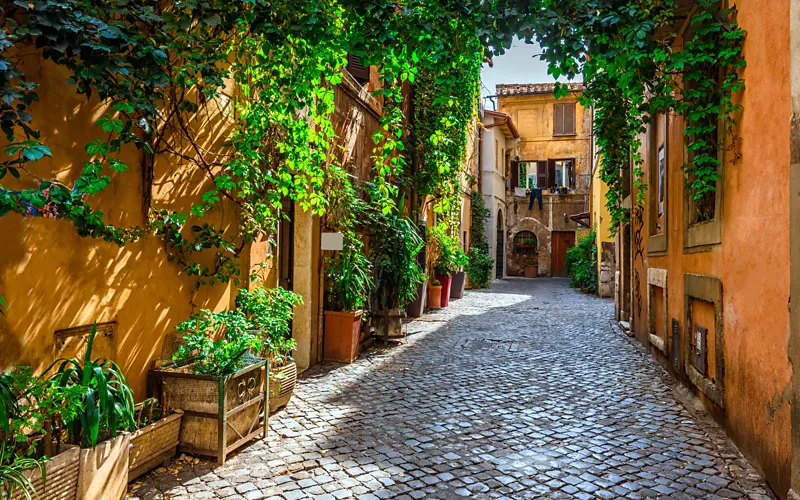
Eco-friendly accommodation facilities are increasingly plentiful in Rome.
From small B&Bs to the most famous historical hotels, passing through glamping options for all seasons and agritourisms immersed in nature, there is an abundance of choice in Rome , but with a single watchword: zero waste.
Careful handling of waste, an invitation to use bathroom linen more than once, seasonally aware cooking, choosing cleaning products that do not pollute: these are just some of the measures that make these places ideal for a truly responsible stay.
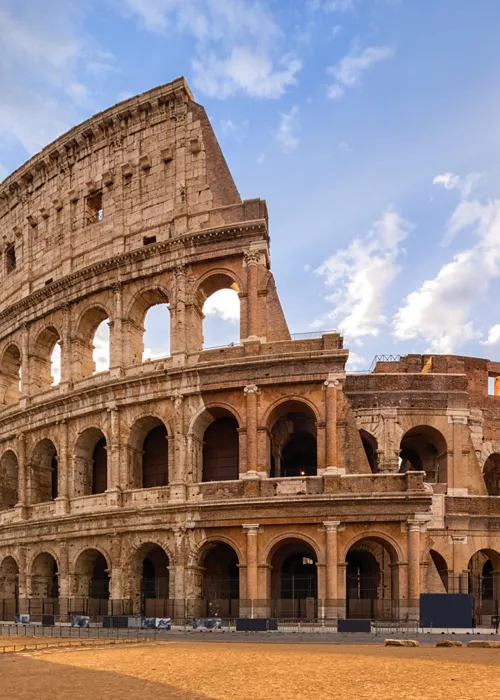
Getting around Rome with the environment in mind
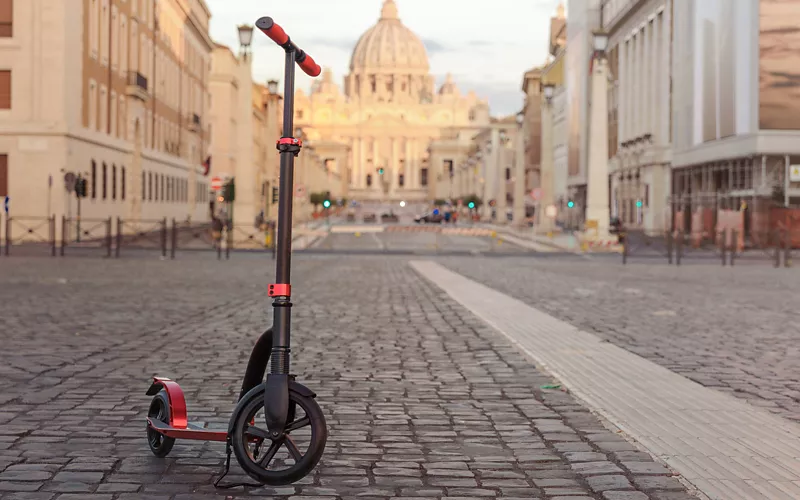
It is becoming increasingly easy to get around Rome on foot or by environmentally friendly means. The distances to be covered are very long and the must-see places are so many that they are not always within walking distance.
Public transport , however, offers the best way to enjoy each attraction without affecting the environment. There are numerous cycle lanes, and hiring a bike (including an electric one) is just a click away thanks to the many booking services via apps such as Uber Jump and Dott.
Those wishing to explore can opt for a scooter, through sharing services such as Dott, Voi, Lime and Bird, or opt for speed with one of the many electric scooters available through eCooltra Scooter Sharing Elettrico. Those who are more adventurous can experience the thrill of moving around the city in a Tuk Tuk by choosing from the many specially-organised tours.
Alternatives that avoid using the car are countless in the capital, and are fundamental in a city characterised by an archaeological and cultural heritage of incalculable value: smog, in fact, severely damages monuments, palaces and historical artefacts.
Eating organically in Rome

The carbonara from Flavio al Velavevodetto or the cacio e pepe from Felice Testaccio are a source of veneration for virtually all Romans, but safeguarding the environment also requires good food. The flavours are typical, yes; but the cuisine is also attentive to seasonality, using zero-kilometre ingredients.
It is indeed possible to do a lot of organic shopping by visiting the numerous markets that liven up the Roman neighbourhoods. The one in Trastevere, for example, comes to life on the second Sunday of every month, and the market in the Testaccio area is open every day except Monday.
Italy's capital is ideal for satisfying every whim and dietary need that has an eye on nature: organic restaurants that use only locally-produced ingredients are increasingly popular, as well as vegetarian and vegan eateries that promise to win you over with surprising flavours that also respect the environment.
Try the Bio Osteria Dar Parucca in Pigneto, known for reinterpreting home-style Roman cuisine in an organic way, and based on zero-kilometre food from local farms. Or be tempted by Ma Va'? in the Vittoria area, a vegan tavern where you can savour typical dishes in a vegan version, all of which are mouth-watering.
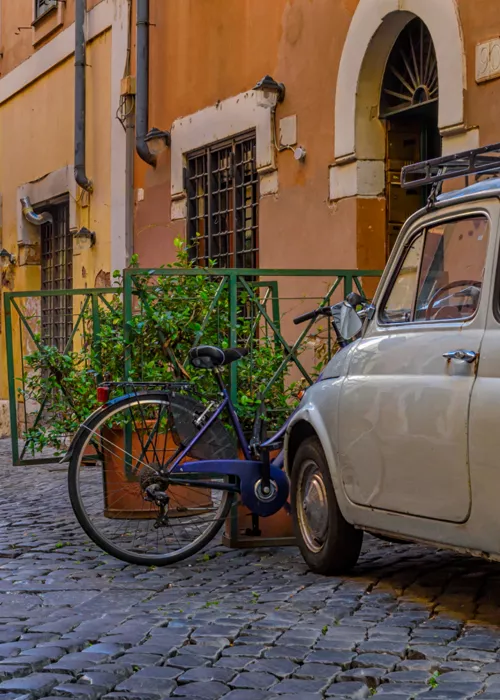
Slow tourism in Rome, even for those with little time
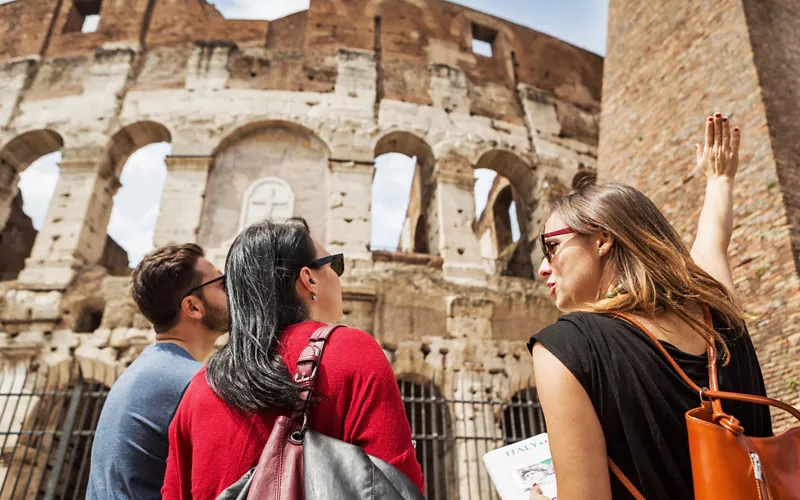
If you are short of time to organise your trip, but wish to appreciate all the incomparable majesty of Rome , the solution is at hand: you can choose to rely on the many tour operators who organise slow and eco-friendly itineraries to discover the Eternal City.
Visiting Rome while respecting the environment and appreciating its culture and monuments is entirely possible: from mobility to food, from the choice of hotel to the tour that suits you best.
The Capital encompasses everything you need, acting as a rudder in the Bel Paese for responsible tourism.
Related articles

At the MAXXI museum in Rome, art combines sustainability and inclusion
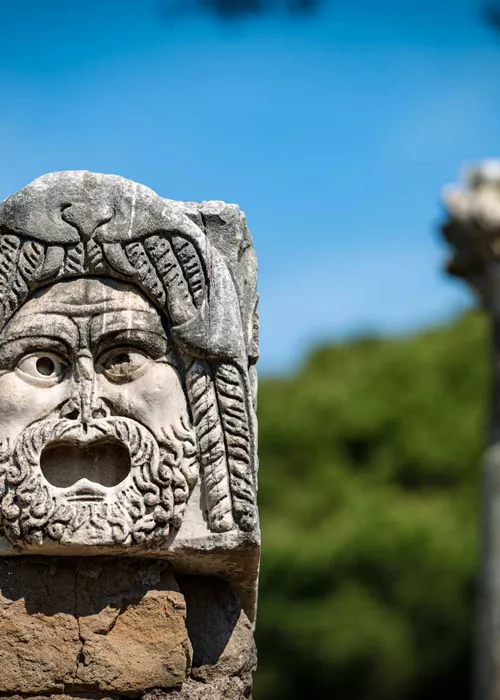
Seven sites of art, history and culture just one hour from Rome

A tour at Rocca di Papa, a small town where over the centuries various legends have arisen
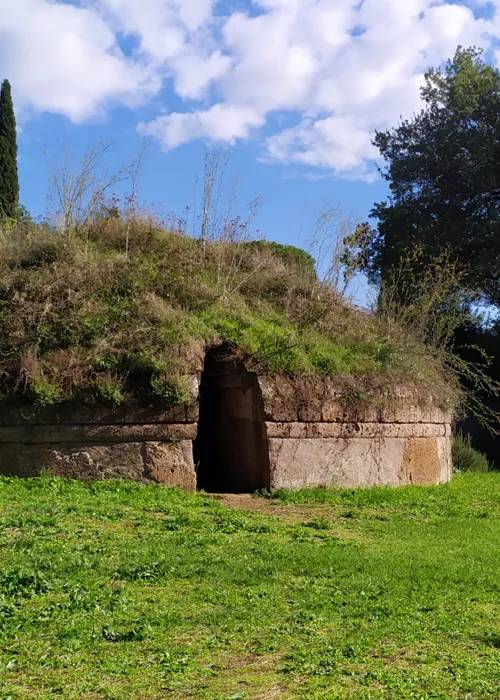
The Necropolises of Tarquinia and Cerveteri
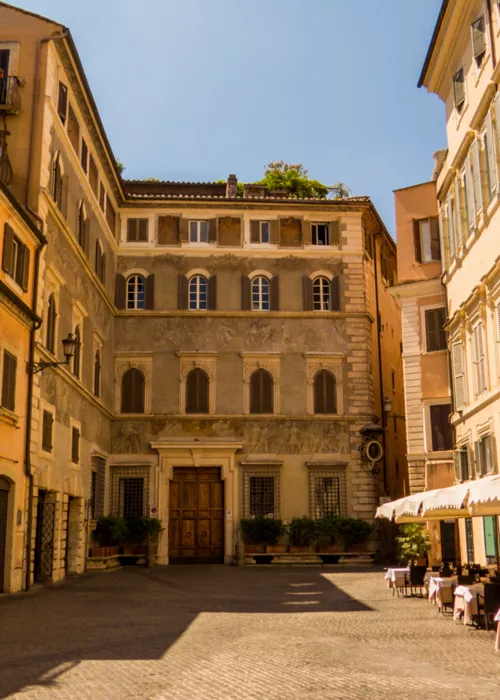
The 'great beauty' of Palazzo Sacchetti, in the heart of Rome, set of the Oscar-winning film by Paolo Sorrentino
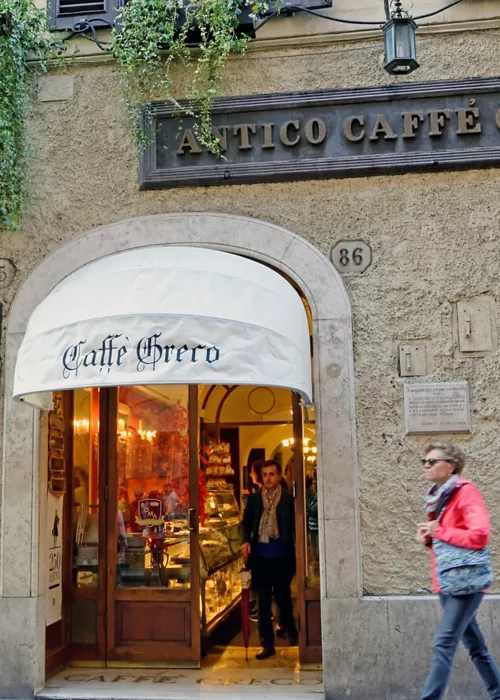
Rome's Historic Cafes

The historical centre of Rome with all its beauty.
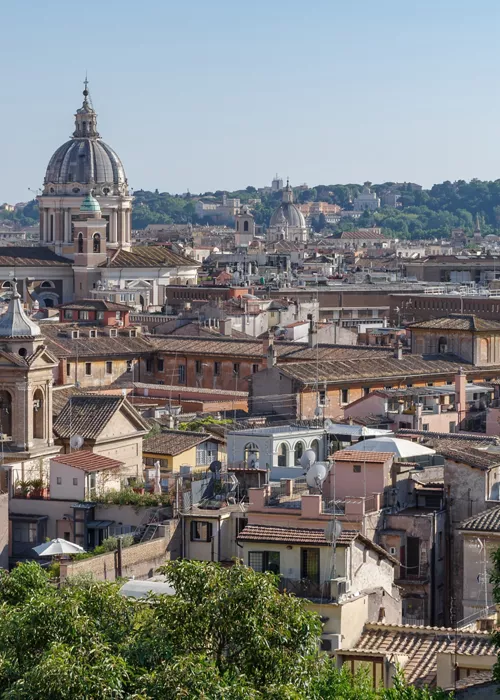
Exclusive aperitifs in Rome's most evocative locations
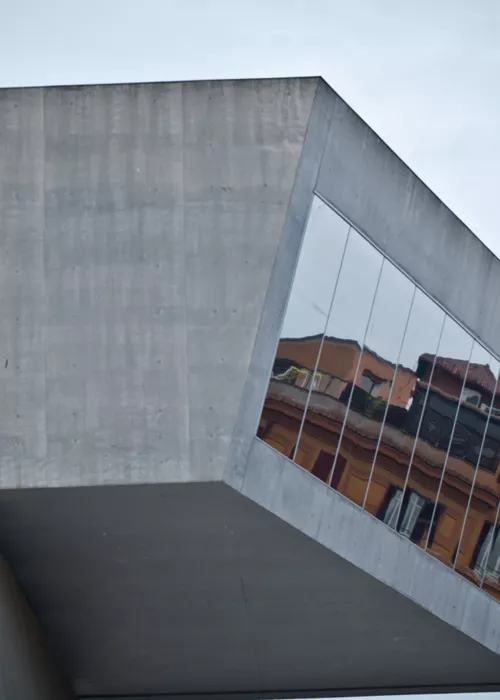
The MAXXI Museum in Rome

Michelangelo's Moses at San Pietro in Vincoli
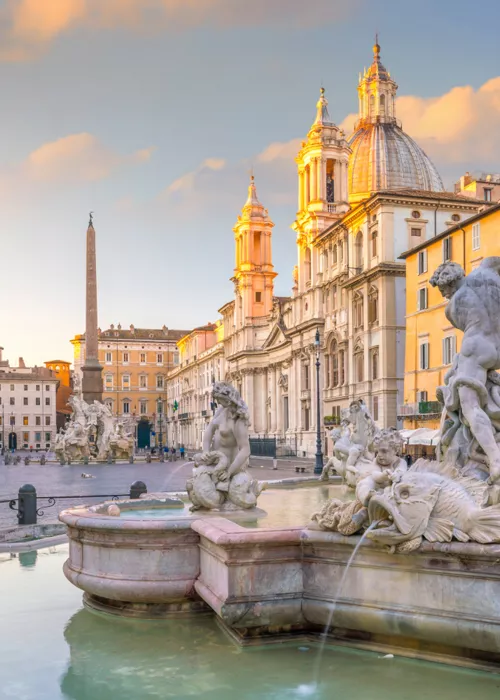
5 unusual things to see in Rome, sacred and profane
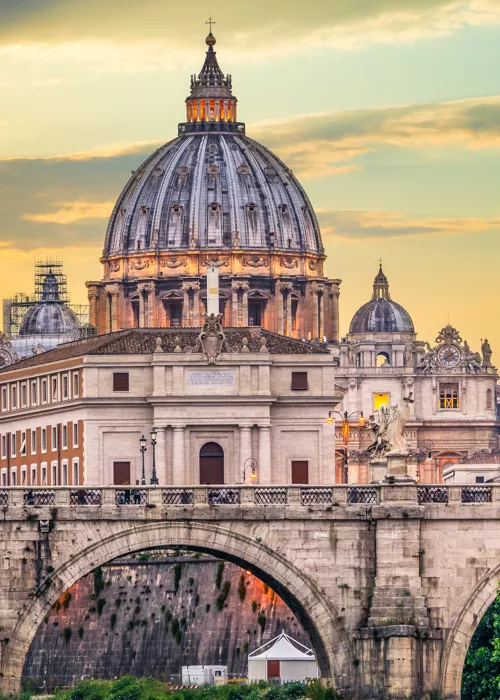
2 days in Rome: the itinerary
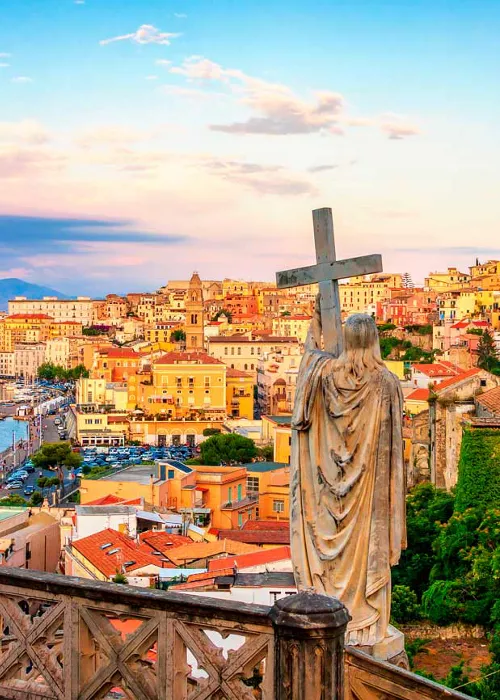
Trips into the countryside starting from Rome
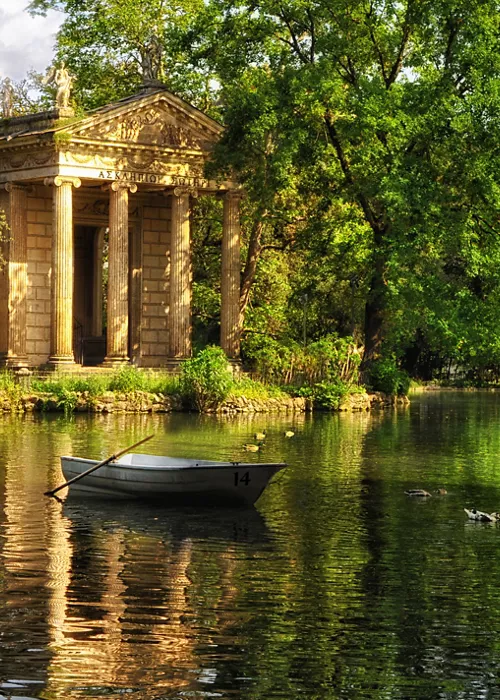
The parks of Rome. Ideas and suggestions for full-immersion in nature in the heart of the Eternal City
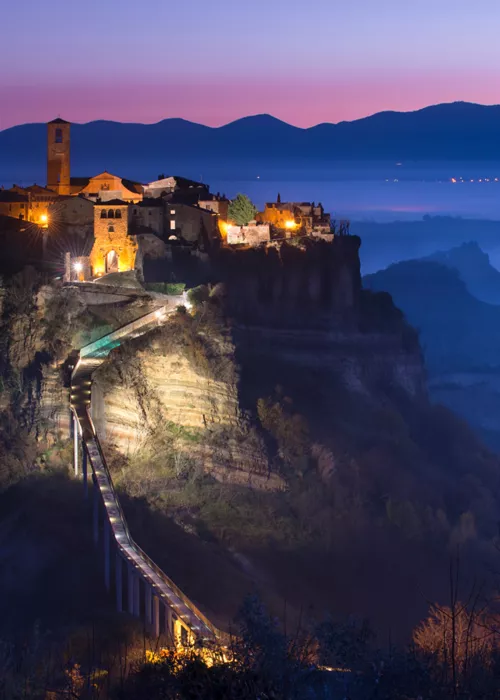
Landscapes of Latium

The Vatican Museums and the Sistine Chapel, wonders second to none in the world

Romics 2024

Jubilee of the Armed Forces

The opening of the Holy Door of St. Peter's and the beginning of the 2025 Jubilee

Opening of the Holy Door of Saint Mary Major

Jubilee of Artists

The Jubilee of the World of Communications

Romaeuropa Festival

Continue living like an Italian
Subscribe to the Newsletter so as not to miss places, events and experiences for experiencing the best side of Italy: the authentic one.
Keep up to date
Would you like to learn about the most authentic experiences to be had in Italy, stay up to date on the most interesting events, discover our special offers and receive lots of insider hints and tips?
Save your favorite places
Create an account or log in to save your wishlist
Do you already have an account? Sign in
- Skip to primary navigation
- Skip to main content
- Skip to primary sidebar
- Skip to footer

The Mindful Traveller
Eco Travel Blog & Photography
Sustainable Travel Guide to Venice, Italy
28 July 2022 · In: Eco Guide , Italy , Venice

The complete sustainable travel guide to Venice, Italy.
Visiting Venice is a once-in-a-lifetime experience : there is nothing more romantic than a weekend getaway wandering through its narrow streets and getting lost.
Not only it is one of the most beautiful cities in the world , but Venice (the Serenissima) is also a UNESCO World Heritage Site, demanding careful attention and preservation for future generations.
Personally, I loved the atmosphere of the city. It is something to experience once in your life! I spent a week there with my partner Matt in the winter, strolling through the streets, getting lost and drinking spritz. And it felt great! But even in this season, Venice was never quiet, and this popularity has come with a price: overtourism .
Overtourism, or mass tourism, is a phenomenon we have witnessed in recent years (especially accentuated by social media) when popular places are visited by excessive numbers of tourists , causing undesirable effects on the destination. And unfortunately, Venice particularly suffers from this phenomenon.
That is why thinking about sustainable tourism and adopting green practices is essential . And if you are planning a trip to Venice but want to learn more about reducing your impact and how to preserve the unique heritage and culture of the Italian city, keep reading!
READ MORE: 3 Perfect Days in Venice, Italy: Complete Itinerary .

What are the impacts of tourism in Venice?
Unfortunately, tourism in Venice mainly has a negative impact due to the overabundance of visitors and the ever-increasing popularity of the Italian city.
Once a place filled with intellectuals and artists, Venice is today flooded by tourists and day-trippers.
Overtourism is a significant problem and translates into an excess of tourists. It results in overcrowding leading to conflicts with locals and increased ecological impact.
Over 36 million people visit Venice yearly, home to less than 50,000 permanent residents. And as many of these visitors focus their time on the most famous landmarks, they accentuate their carbon footprint – and the damage only increases.
Here are some examples of the damages caused by overtourism in Venice:
- Reduced quality of life
- Disrespectful visitor behaviour
- Excessive noise and crowds
- Congested narrow streets
- More pollution and litter
- Lost of authenticity
- Price increases in stores
- Shops cater to tourists, not locals
- Fragile buildings damaged
- Poor employment opportunities
- The rising cost of living
And what has been the result? Depopulation.
The number of permanent residents in Venice continues to decline, and falling under 40,000 would be catastrophic for the Italian city.

What is causing overtourism in Venice?
The causes of overtourism in Venice are complex and diverse.
As in other main European cities, the primary causes of overtourism are often due to low-cost flights, cruise ships and day trips . The latter is a significant issue in a fragile city like Venice. Over 36 million visitors each year, and only half stay overnight, having a consequential impact on the local economy and environment.
What are the positive impacts of tourism in Venice?
Despite these many harmful consequences, tourism still has some positive impacts on the beautiful city of Venice.
Yes, tourism is not all bad! And the goal of this article is not for you to stop travelling. It is about opening your eyes to the significant impacts you have and providing solutions and tips to reduce them as much as possible. All this to enjoy and immerse yourself in the unique Italian culture without damaging it!
The main advantage of tourism in Venice is the economy.
The tourism industry remains the primary source of income in Venice – a city that relies almost entirely on it.
As a result, tourism creates new job opportunities such as mechanics, waiters, water taxis, gondoliers, hoteliers and many more.
Finally, tax revenue from tourists is another benefit. If the number of visitors increases, the GDP will rise, and more employment possibilities will open – and, therefore, more earnings for the city.
What can we do as travellers?
It is no longer possible to ignore the environmental, social and economic impact we have by travelling. And that is why understanding responsible tourism is essential for a sustainable expansion of the industry and the preservation of the places we visit.
Green tourism and slow travel should be how we explore the world and connect with locals. It means travelling in ways that maximise positive impacts and minimise negative ones .
In the case of Venice, the solution is not simple. Avoiding visiting the city, which depends almost entirely on tourism, is problematic and not the best option.
In this sustainable travel guide to Venice, I provide everything you need to plan a green trip to the romantic Italian city along with 10 eco-tips to be a more responsible traveller – explore whilst reducing impact. Enjoy!
Want to know more?
- The Complete Guide to Sustainable Travel
- 10 Best Travel Apps for Exploring Sustainably
- 10 Best Sustainable Backpacks for Travel & Hiking

What does sustainable travel mean?
Before we get into this guide to exploring Venice responsibly, it is essential to understand the definition and purpose of sustainable travel – which does not mean stopping travelling altogether!
Sustainable travel means exploring the world whilst being aware of your surroundings and having a positive social, environmental and economic impact on the places you visit .
It could be by adopting more sustainable methods of transportation, staying in more eco-friendly accommodations, eating local and seasonal foods, or avoiding harmful activities to flora and fauna.
Ultimately, the primary goal of sustainable travel is to create a better and more viable long-term future for tourism .
As a result, in response to climate change and the negative impacts of travelling on our planet, ecotourism was born and today continues to expand.
According to The International Ecotourism Society (TIES) , you can define ecotourism as “ responsible travel to natural areas that conserve the environment, sustains the well-being of the local people and involves interpretation and education ”.
In other words, ecotourism means providing positive experiences to visitors and hosts whilst developing a culture of environmental respect and having a favourable social and economic impact .

Best time to visit Venice (without the crowds)
Although Venice never gets quiet, the best time to visit the Italian city without the crowds is in the winter season : from September to February.
The weather might be wet and chilly from time to time, but you will be able to enjoy the best attractions in a more peaceful way.
The end of September is a particularly great time to discover Venice . The large crows would have left to return to work or school, and the weather would still be pleasant with mild temperatures. Plus, prices will fall, and life will be cheaper.
Finally, if you can, avoid visiting Venice on weekends . It is due to the cruise ship arrivals, as most arrive on a Saturday or Sunday. On top of that, day-trippers will most likely show up during the weekend, as Venice is an ideal getaway for neighbouring towns.
And if you are wondering, the worst month to travel to Venice is August – a perfect example of overtourism. Hotels will be expensive, restaurants will be full, bars will be overcrowded, and the streets will be congested. Therefore, it is not the best time to enjoy the city and connect with the locals.

Shop the printable travel itinerary
Create your dream city break and live an unforgettable adventure!

How to get around Venice sustainably?
You have two main options for getting around Venice: walking or by water.
The easiest way to get around Venice sustainably is on foot . In fact, cars are not allowed in this city! Therefore, it is the perfect place for leaving automobiles behind and exploring walking. Not only will you reduce your impact on the environment, but it will also allow you to slow down, truly appreciate your surroundings and discover hidden places you might otherwise miss.
As a bonus, feel free to bypass the crowded streets, avoid popular hotspots and wander off the beaten path . Venice is perfect for strolling and getting lost.
And do not worry too much about the acqua alta – the city has walkways in case the streets get flooded. However, it is always a good idea to bring rain boots when visiting in autumn and winter .
Finally, another way to get around Venice is to use the Vaporetti – a Venetian public waterbus. Nineteen scheduled lines serve areas of the city and connect them to nearby islands, such as Murano, Burano, and Lido.
Vaporetti can be expensive, especially when buying your ticket on board – so remember to purchase it in advance and choose a multi-day pass if it is easier. However, do not forget that these water boats are not eco-friendly and pollute the lagoon, so only use them when necessary.

Best green hotels in Venice
Venice offers many examples of eco-conscious hotels aiming to preserve the heritage of the city whilst bringing modern and sustainable facilities.
READ MORE: Where To Stay in Venice: 7 Best Areas (& Hotels)
Here are some of the best green hotels in the Serenissima :
1- Corte di Gabriela
Corte di Gabriela is located in the centre of Venice, nestled between the Grand Canal and the Rialto Bridge to the north; between Piazza San Marco and the Gran Teatro La Fenice to the south.
It is a lovely eco-friendly boutique hotel embodying a perfect blend of sustainability and luxury comfort. They stand as one of the pioneers of the eco-friendly approach in Venice and have been honoured with the European Certificate of Eco-Sustainable Hotel.
Ecology and zero-waste are undoubtedly at the core of the hotel. Corte di Gabriela strives for a green approach to tourism through better energy and water management and plastic reduction. For example, they only use glass bottles for the mini-bar and always choose zero-kilometres, local products.
Website: https://www.cortedigabriela.com/
2- Ca’ della Corte
Ca’ della Corte is an XVI-century Venetian Palace, completely renovated in a style that highlights its beauty, elegance and refinement. It also enjoys an excellent location, just 3 minutes from Piazzale Roma.
In addition to being transformed into a majestic hotel, Ca’ della Corte is certified by Eco World Hotels for its attention to the careful disposal of waste, recycling and intelligent use of energy sources and materials.
This unique hotel focuses mainly on the ecological use of power sources, minimising unnecessary consumption and prioritising recyclable and environmentally friendly materials.
Website: https://www.cadellacorte.com/
3- NH Collection Palazzo Barocci
Set in a unique location overlooking the Grand Canal, Palazzo Barocci emerges like a jewel amongst the alleys and offers guests breathtaking views of one of the most romantic cities.
This hotel chain has a broad sustainability strategy that includes low-impact amenities and materials, decreasing water consumption, recycling, reducing CO2 emissions and protecting biodiversity.
Additionally, every NH hotel, including the Palazzo Barocci, is committed to being eco-friendly by avoiding plastic bottles, opting for fair trade and local produce, and choosing biodegradable materials. And to further educate its guests, The Venetian Hotel participates in several events throughout the year to promote sustainability and the importance of preserving our planet.
Website: https://www.palazzobarocci.com/

Best vegan & vegetarian restaurants in Venice
Impossible to visit Italy and Venice without tasting its delightful cuisine! And as more and more Italian restaurants are leaning toward vegan and vegetarian dishes with a classic touch, you will not have to compromise when travelling.
Here are some of the best restaurants in Venice for vegans and vegetarians:
1- La Zucca
La Zucca is a seasonal Venetian restaurant with vegetarian tendencies, established in a cosy setting with tables by the canal. And with seating for no more than 35 people, the atmosphere is classically intimate – a perfect getaway into the local cuisine and culture.
La Zucca is not a vegetarian restaurant but offers many fresh vegetable courses made with natural ingredients. And as its name suggests, its specialities focus on the pumpkin (or ‘Zucca’), offering dishes such as dreamy pumpkin flan and warming soup. They also have several authentic pasta-based plates perfect for vegetarians.
Website: https://www.www.lazucca.it/
2- Pizzeria L’Angelo
Pizzeria L’Angelo is a unique place that offers many delicious options for vegetarians and vegans. The store is mainly a counter-service (no seating) and is perfect for eating on the go. In addition to vegetarian and vegan pizzas, the pizzeria also serves plenty of vegan sandwiches.
Located in the San Marco area, it is a perfect spot to recharge before a day of sightseeing in beautiful Venice, with many highlights and attractions nearby.
Website: Facebook page
3- La Tecia Vegana
La Tecia Vegana is a cosy restaurant specialising in vegan dishes made exclusively with products from organic farming. A fusion cuisine where ethnic mixes and a mission of revisiting classic specialities to suit plant-based lifestyles.
In keeping with their fresh approach to well-known dishes, the style of the restaurant itself is also a tribute to classic Italy, with a red awning outside and the ambience of a traditional Italian eatery inside. A perfect place to immerse yourself in the Venetian heritage whilst preserving our planet.
Website: https://en.lateciavegana.com/

Best (eco-friendly) things to do in Venice
- Just wander & get lost
- Eat and drink like a local
- Explore Piazza San Marco
- See the golden domes of St Mark’s Basilica
- Climb the Campanile
- Visit the Dodge’s Palace
- Enjoy the view from Ponte di Rialto
- Cruise the canal with a gondola
- Admire the Bridge of Sighs
- Take a Venice food tour

Hey, are you enjoying this content?
Enjoy reading this article and want to continue learning more about sustainable travel? Support the blog & community by buying me a coffee! ☕
A little goes a long way. And together, we can create a better future for our planet.

How to be a responsible traveller in Venice
Being a responsible traveller in Venice is not impossible and should be necessary to preserve the natural beauty of the Italian city.
There are ways to be more eco-conscious when visiting the Serenissima, and here are ten sustainable tourism tips to make your trip greener:
1- Travel off-season & avoid cruises
As Venice suffers heavily from overtourism, one of the best things you can do as a responsible traveller is to visit the city in off-peak times, such as winter (from September to mid-February).
You will do the planet a favour but also yourself by being able to discover the floating city without the crowds and genuinely appreciate the beauty of this place. Plus, by travelling off-season, you will contribute to the local economy with year-round jobs – and be able to connect with locals!
Another tip would be to prioritise visiting Venice on weekdays rather than weekends to avoid cruise ships and day trippers.
2- Book direct flights & carbon footprint
Once you have selected the dates for your trip, your next step would be to choose a direct flight to reach Venice.
Venice Airport is easily accessible and well-connected to most European cities. So if possible, choose a non-stop journey as taking off and landing use more fuel than cruising.
You can also use Skyscanner to see flights with lower CO₂ emissions and EcoPassenger to calculate the environmental impact of your journey.
Finally, you can compensate for your impact by investing in local projects and communities BUT do not use carbon offset as a complete solution.
Combine it with other sustainable practices, like prioritising other methods of transport, avoiding single-use plastic on the plane and mindfully packing your suitcase to be ready for your green adventure.
3- Prioritise slow travel
One of the primary causes of overtourism in Venice is day trippers, usually because of cruise ships. Cruise passengers typically do not stay long (less than 20 hours) and do not contribute much to the local economy. Moreover, the first thing they will do once in the city is to visit the most famous sites, such as San Marco Square.
This mass tourism phenomenon in such a small square destroys the cultural authenticity of the place and tarnishes the general charm of the city for tourists and locals. That is why it is essential to learn more about slow travel.
Slow travel is a way of exploring the world, accentuating slowing down and connecting with the places and locals. This approach allows you to take more time to get to know a country and its culture on a deeper level, which can also mean travelling less but staying longer = quality over quantity.
Therefore, if you can, try to visit Venice on your own and stay longer – for 3 or 4 days at least to get to know this wonderful city.
4- Stay in a green accommodation
Once you have booked your transport to Venice, try to reserve your city getaway at a hotel or B&B that adopts eco-responsible practices.
Many accommodations are working toward becoming greener by innovating and reducing their impact. For example, check out these three sustainable hotels in Venice:
- Corte di Gabriela
- Ca’ della Corte
- Palazzo Barocci
As guidance, read the hotel description, look for certification or statement committing to sustainability, or search for places locally owned.
5- Eat local & try typical Venetian cuisine
When travelling to Venice, being mindful of what you eat and buy is crucial to leaving a lower footprint and being a sustainable explorer. Ask the locals where they like to eat, buy your food at local markets, and go to local vegetarian and vegan restaurants supporting farmers and sustainable products.
Plus, more and more Italian restaurants are leaning toward vegan and vegetarian dishes with a classic touch, so you will not have to compromise when travelling. Here are some of the best restaurants in Venice for vegans and vegetarians:
- Pizzeria L’Angelo
- La Tecia Vegana
6- Be zero-waste & avoid plastic
Always pick up your trash or any you come across, and avoid plastic at all costs! And the best way to reduce waste when travelling to Venice is to arrive prepared. That is why considering what you bring with you is so important. Here are some ideas, bring:
- Reusable water bottles (reduce single-use plastic)
- Eco-friendly tote bags (reduce single-use plastic)
- Travel towels (reduce water usage)
- Cutlery and containers (reduce single-use plastic)
- Reusable straws (reduce single-use plastic)
- Biodegradable shampoos (reduce toxic chemicals)
- Zero-waste sunscreens (reduce single-use plastic & toxic chemicals)
- Solid toiletries (reduce water usage)
- Portable solar chargers (reduce energy usage)
7- Shop local & support authentic artisans
The souvenirs we bring home matter as much as how we travel. Being mindful of your shopping habits is another way to become more responsible and contribute to the local economy.
Ask questions to learn more about the product you want to buy and its origin, shop local, decline objects made with animal products and refuse single-use plastic bags.
Be sure to support authentic, local artisans and be aware of tourist traps and illegal vendors. For this, look for certification and follow your own judgement.
8- Use water fountains & be mindful of your water consumption
Venice is full of free water fountains offering fresh and cold water – so bring your reusable water bottle to stay hydrated, even in winter! There is no reason for you to buy bottled water during your stay.
Sustainable travel in Venice is also about paying attention to your water consumption (and it should be the case whatever your destination!). It means: having shorter showers, checking all taps are closed properly or not washing your hotel towels daily. We often overlook the latter, but reusing your towel or bringing your own will save a lot of water and do good for the planet.
9- Go on a gondola ride (and avoid cruise ships)
I know going on a gondola ride might sound very touristy, but it is by seeing Venice from the water that you will truly appreciate its beauty. Plus, by taking a gondola ride (instead of water taxis), you will help preserve the lagoon, the environment, the fragile buildings and the local economy by supporting local and authentic gondoliers.
However, do not use the gondolas near popular spots to help spread mass tourism. Instead, venture into more secluded streets and local areas to book your gondola – and enjoy the ride!
10- Respect the locals and their culture
Remember that Venice is a city and people live there.
Treat people and their surroundings with respect. Sustainable travel in Venice is not only about the environment but also about the locals. So, smile, be respectful and try to learn a few Italian words.
It also applies to cultural sites. Be quiet, dress appropriately, do not touch anything and ask if you have any questions. And if you can, limit your time on Piazza San Marco.
In addition, walk to the right, be mindful when taking photos (do not stand on bridges forever!), do not sit on the floor or any step, and do not feed pigeons.

Do you have any other suggestions for sustainable travel in Venice? Let me know in the comments below!
With love ♡ Lucie
- Share on Twitter Share on Twitter
- Share on Facebook Share on Facebook
- Share on Pinterest Share on Pinterest
You will also love

STAY INSPIRED
Join our community today to receive exclusive travel tips & behind-the-scene stories that will inspire your next adventures, directly to your inbox. Can't wait to see you inside ♡
Reader Interactions
Leave a reply cancel reply.
Your email address will not be published. Required fields are marked *
Save my name, email, and website in this browser for the next time I comment.

15 Travel Books to Inspire Your Next Eco-Adventure
Follow the journey.

On the Blog
- Privacy Policy
Become an insider!
And receive exclusive travel tips & behind-the-scene stories ♡
Copyright Lucie Charpentier © 2024 · Theme by 17th Avenue

- Ecotourism in Italy: 7 good tips to organise your trip
- Best Tours and Experiences
Choosing ecotourism means preserving the natural environment and increasing the local population's well-being

As an experienced traveller, you may have noticed that in recent years transport companies have included the option of offsetting your ecological footprint ; this is because the need to preserve the environment is becoming increasingly pressing, and a traveller has to take into account that their presence in a place has an impact on the place they visit, both environmental and social.
We at Visit Italy care deeply about preserving our beautiful country so that everyone can enjoy its beauty to the full, so we have compiled 7 useful tips for you to control your ecological footprint in a practical way during your trip.
Ecotourism: what it is and how to practice it
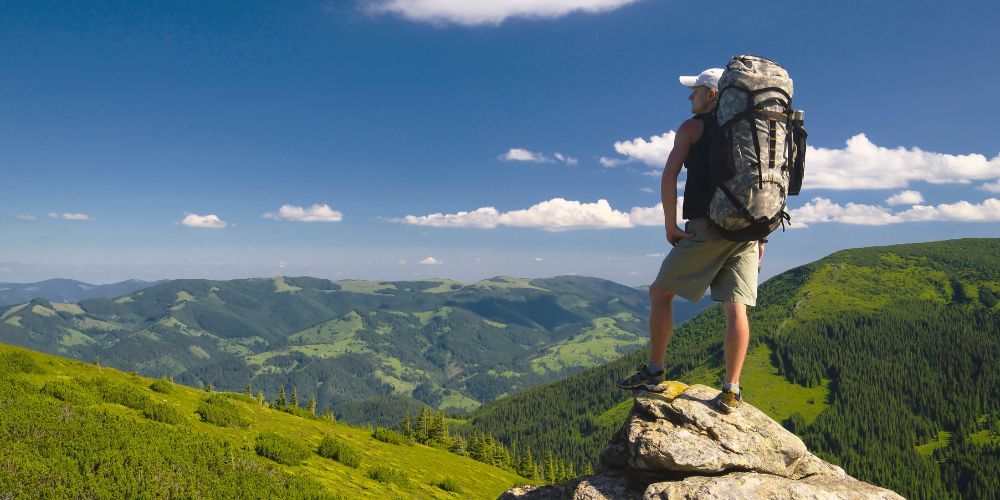
As we said, travelling to a new destination is not just about discovering unknown places: our presence influences the environment around us , and our journey will impact the places we visit even if we may not realise it at first. Every choice we make, where we sleep, how we move around, where we eat, all contribute to changing the landscape, for better or worse.
Ecotourism is a reflection that has emerged over the last few decades, prompting people to travel more consciously, suggesting alternative solutions to preserve nature and improve the lives of the local people. Ecotourism combines the principles of sustainable and responsible tourism , providing a veritable list of tips on how to make one's holiday as carbon-neutral as possible while enjoying it to the full.
So here are our practical tips for an eco-friendly holiday in Italy , so it is not only the journey that will have a beneficial effect on you but also your presence that will improve our beautiful land.
7. Ecotourism in Italy means travelling in low season
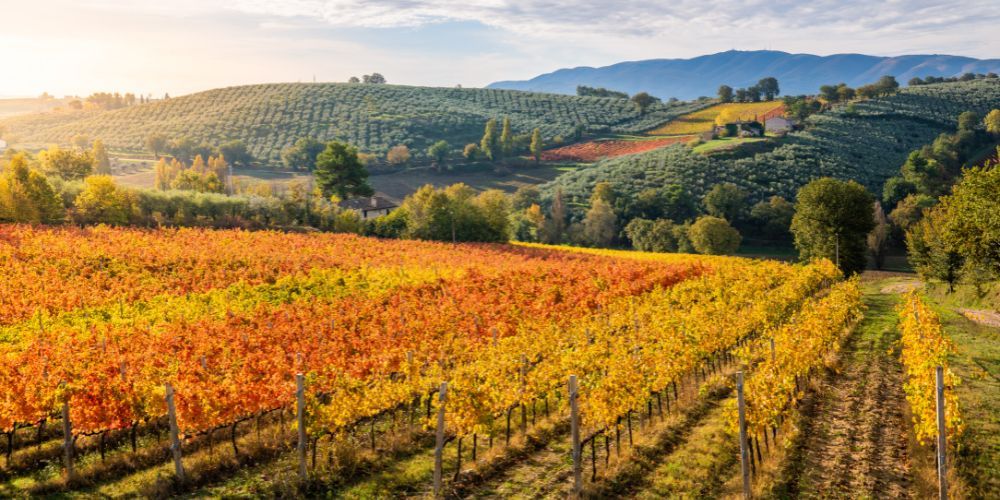
Autumn colours among the vineyards of Umbria
Italy is known the world over for its history, art and food, heritages available throughout the year in almost every corner of the peninsula. Unfortunately, most tourists decide to visit Italy during the summer season, to take advantage of the climate and enjoy the sunny beaches of sea and lake coasts.
One of the principles of sustainable and responsible tourism is to choose to travel in the low season , which is the period from February to May and September to November . Travelling during these periods allows territories to survive and thrive not only during the summer (or winter) season, but all year round. In addition, the trip will be much cheaper and the absence of hordes of tourists will allow you to enjoy the most beautiful Italian attractions in peace.
Not sure where to start? Follow our tips on what to do in autumn in Italy .

6. Move like a local
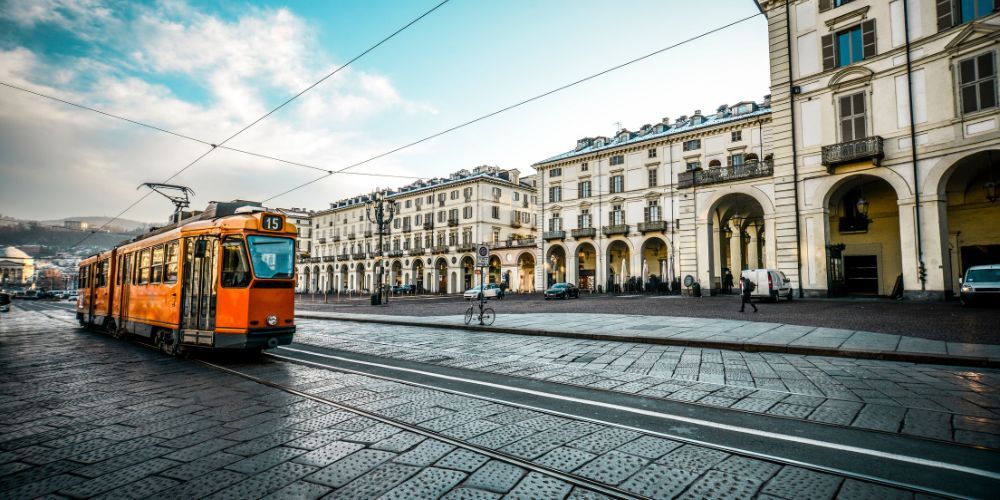
Historic tram in Turin
As mentioned earlier, for the past couple of years many transport companies have been offering customers the opportunity to offset the CO2 emissions caused by their travel. But when we are at our destination, how can we reduce our ecological footprint? One of our most important tips is to get around on foot, by bicycle or scooter, or by using public transport . The latter option is very good if we talk about large city centres, where you can find efficient networks of buses, trams and metros .
If you are in Turin , you will notice that most of the main attractions are located in the city centre, which we highly recommend visiting on foot or by bike so as not to miss the city's most magical corners. But Piedmont's capital is one of the few in Italy that still uses historical trams , at the same price as more modern means of transport. On board these vehicles you can experience the unique atmosphere of Italy's most magical city.
You can find our tips on getting around the major urban centres here .

5. Visit small villages

Italy is dotted with small villages and small towns that hide incredible treasures. You will really love your trip to Italy because you can find beauty everywhere. You'll find yourself visiting tiny towns in Sicily where the small main church displays all the main features of Baroque; walking through the Alps, you'll find widespread villages made up of old wooden farmhouses from the last century; in the heart of Tuscany, you'll discover movingly beautiful Renaissance frescoes hidden in towns so small they don't even have a cinema.
Why is visiting these small villages a sustainable and responsible tourism choice? Because by doing so, you are actively helping to preserve these treasures . The inhabitants of these villages are very proud of their human heritage, and seeing that these resources bring tourists from all over the world to their small towns will make them more inclined to keep them in good condition. Bringing tourism to these small villages, you will help keep them alive: the local people will be keen to show you around and show you the most authentic Italy.
Here are some examples of small Italian villages worth a visit, some of which have been listed among the most beautiful villages in Italy . The town of Spello in Tuscany, with its spectacular spring flower displays and the Villa dei Mosaici (8,300 inhabitants), is one of the most beautiful villages in Italy. Dolceacqua , The Ligurian town on the border with France, is a small village of around 2,000 inhabitants, which Monet used as a model for his paintings. Finally, the town of Gromo , in Val Seriana, in the heart of the Alps: a small jewel with a marvellous 13th-century castle and 15th-century Palazzo Milesi (1,200 inhabitants).
4. Trekking on ancient paths

The mountain ranges of the Alps and the Apennines across the entire Italian territory: thanks to these majestic reliefs in many regions, it is possible to make spectacular treks characterised by breathtaking landscapes.
Many of these paths were laid out in Roman ages for commercial or military purposes, and it is still possible to admire stretches of ancient foundations and the famous 'milestones'. Other paths in the Alps are called " mule tracks " and were used by the locals to climb the slopes as quickly as possible and to reach the alpine pastures in a short time. As the word suggests, these paths were used by mules to transport food for the shepherds during the transhumance.
Deciding to walk one of these roads in the footsteps of the ancient Italians is an experience of great human and spiritual value and a way of practising all-around ecotourism. These paths are kept clean, marked and sometimes retraced by the locals, who will be able to show you the most scenic spots, the next water source and churches and monasteries where you can sleep.
Some of the treks we would like to recommend for your eco-friendly trip are: the Via Degli Dei (God's Path), which runs from Bologna to Florence; the Via del Sale (Salt Path), which runs from the heart of Lombardy down to the Ligurian Sea and was once used to transport salt; and the Via Francigena , which crosses most of the Apennines in Italy, touching on towns such as Ivrea, Pavia, Lucca, San Gimignano, Viterbo and finally arriving in Rome
3. Cycling holidays
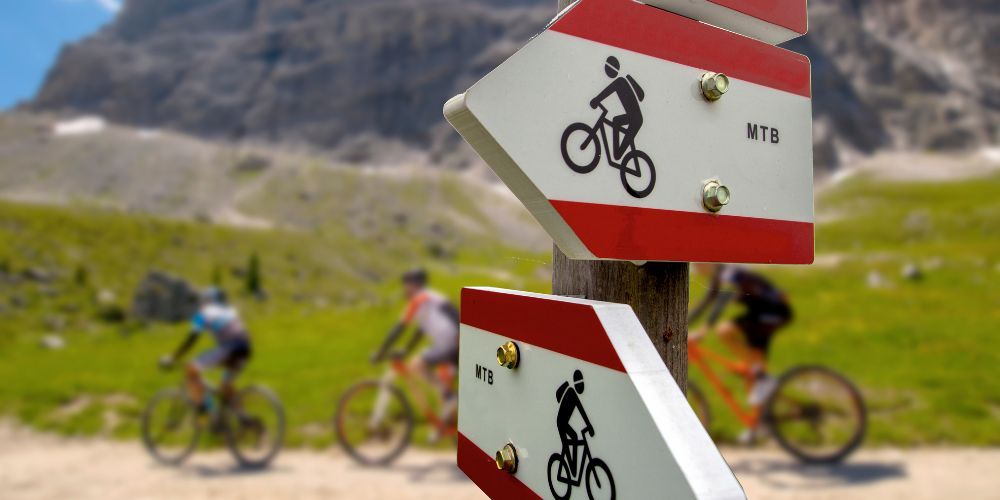
What could be greener than a cycling holiday? Cycling alone or in a company under the warm Italian spring sun will make you feel alive and free as never before! Cycle tourism is a slow choice, allowing you to fully enjoy the surrounding area without polluting the environment or submitting to the schedules and complications of road or rail transport.
Many tourist resorts and hotels have already equipped themselves with services that allow bikes to be rented on-site throughout Italy, and several travel agencies organise guided tours.
Apulia with its ancient seaside villages; the 210 km of white roads that wind through the hills of Siena and Val D'Orcia (the famous "heroic" road, a historic competitive cycling route); the romantic landscapes of the hills between the Langhe and Monferrato in Piedmont ; these are just some of the possible itineraries that will allow you to discover Italy by bike , with 100% respect for the environment.
2. Ecotourism is buying local: cities food markets

Wherever you are in Italy, in the mountains or by sea, in the city or country, in the north or south, in the centre of Italy or on the islands, one thing is sure: food will be delicious! The Italian culinary tradition is known worldwide, both for its creative recipes and, above all, for its high-quality raw materials. A fundamental choice for sustainable and responsible tourism is shopping in open-air markets : here, you will find farmers, peasants and breeders selling their healthy and organic products. Here, farmers, peasants, and breeders sell their healthy, organic produce. You will find seasonal fruit and vegetables, local meat and fish: in this way, you will be able to make the most of local raw materials and fully enjoy the best the area has to offer.
In particular, the Slow Food association organises famous ' Earth Markets ' in all regions of Italy, which adhere to three great values: good, clean and fair. "Good" for the quality of the products, "clean" for is environmentally sustainable and "fair" for the respect for those who work the land.
There are also historic markets in various Italian cities where local farmers sell their produce.
Genoa's oriental market is the perfect place to find freshly caught fish, often sold with the recommended recipe. You'll also find local produce such as cured meats, basil-based condiments, olives and a vast selection of focaccia. Bolzano's Piazza delle Erbe market is one of the oldest in Italy: it seems that as early as 1200, the valley inhabitants came here to do their shopping. Here you can find seasonal fruit and vegetables and many varieties of speck and cheese. Would you like to taste a real buffalo mozzarella from Campania? Then don't miss a stop at the Pignasecca market in Naples! Here you will find an impressive variety of dairy products typical of the Campania region: fresh ricotta, local cheeses and the inevitable mozzarella. The Pignasecca market also sells capitoni, the usual fish cooked on Christmas Eve during the Christmas period.
At the Rialto market in Venice , you'll be spoilt for choice with all kinds of fish from the lagoon. Among the stalls, you'll also find the bacari , typical Venetian taverns with simple furnishings that offer the famous ombre (glasses of wine) accompanied by cicheti (small samples of food cooked with standard products): a great way to refresh the spirit between one stall and another.
1. Alpine malga holidays

Alpine pasture
If you love the Alps and want a unique, original and genuinely "green" experience, choose a stay in an alpine malga . This term refers to the high mountain pastures, the so-called alpeggi, where the cows are taken to graze the best grass and thus produce high-quality milk. In Trentino and South Tyrol , many structures in the alpine pastures host tourists: these are always very picturesque wooden huts, at an altitude ranging from 700 metres to 2500 metres.
Choosing an eco-holiday in an alpine hut will be a fun and memorable experience for the whole family: here you can work with shepherds helping them in the production of dairy products, and live in contact with the many animals that graze freely such as horses, rabbits, donkeys, ducks and pigs. In a malga, you can taste typical dishes of excellent quality, walk in the heart of the Alps, enjoy unforgettable sunsets and sunrises and breathe the cleanest air in Italy!
Suppose you decide to plan a holiday in a malga towards the end of September. In that case, you might be lucky enough to be able to attend the desmalgada : an annual festival that coincides with the moment when the cows say goodbye to the alpine pastures and return to the farms at lower altitudes where they will spend the winter. During this festival, the sweet cattle are adorned with necklaces of flowers and cowbells, while the whole mountainside seems to glow in a final salute to these wonderful alpine animals.

We recommend

Subscribe to our weekly Newsletter dedicated to the Italian culture, art and traditions.
You are about to get your dose of inspiration!
Check your email to confirm your subscription and receive special offers, if you do not receive the e-mail, check the spam box.
- Partners and Fundings
- events & news
- green hotels
- who’s talking about us
Sustainable Tourism in Italy
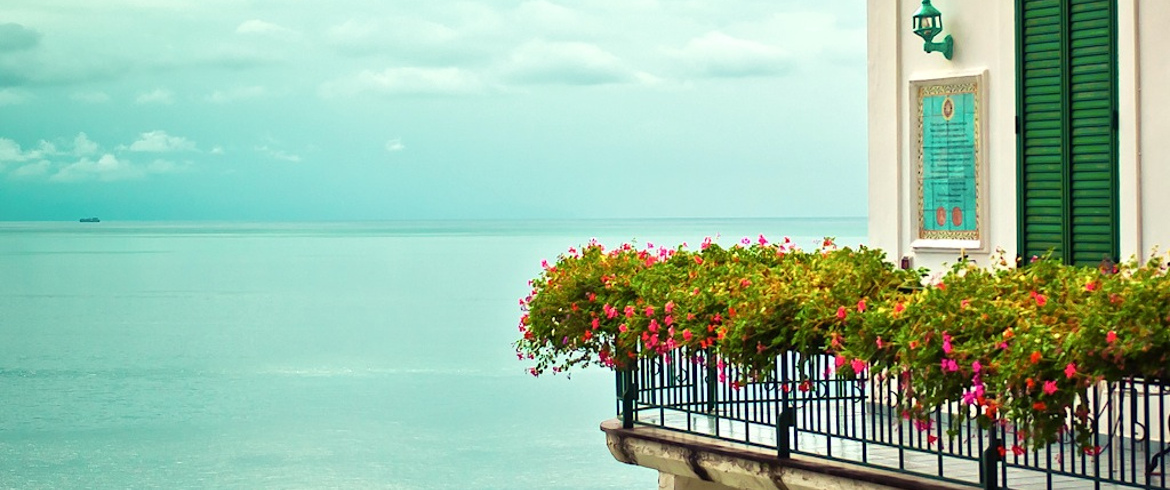
Sustainable tourism in Italy did well in the year 2009 because of pressure and inspiration to preserve the environment. The trend is continuing with Italy’s travel and tourism sector integrating the Eco-friendly practices. However, sustainable tourism in Italy is not made to boost the economy only but they are also aiming at benefiting local communities .
Here are some of the benefits of sustainable tourism in Italy;
1. Employment generation
The rapid growth of Italy’s tourism industry has contributed to generation of job opportunities. Many people have been absorbed in the hotel accommodation industry where they now work. Other job opportunities that have emerged in this sector are taxi jobs, souvenir sales, as well as tenders to supply the tourism businesses with the required goods and services and much more.
2. Preservation of local customs and traditions
The less famous areas in Italy have been promoted through Eco-tourism as the local cultural elements have been protected too. Responsible tourism has also rediscovered the unique characteristics of this nation’s natural regions hence helping in developing its traditions and Italy as a whole. This has been as a result of the provision of inter-regional actions and particular local activities.
Environment is a basic element of the tourism sector assets hence the revenues obtained from tourism are used to develop the local businesses.
3. Contribution to growth of Italy’s economy
Responsible tourism in Italy has contributed to the growth of its economy through generation of income to the government. The fees applied on main entrances of the tourist attraction destinations mainly goes to the government. In addition, the local goods and services that are supplied to the tourists get taxed and all this money goes to the government. Other taxes such as departure taxes have been introduced hence greatly contributing to Italy’s economic growth.
4. Contribution to improved infrastructure
Italy’s infrastructure has improved as a result of sustainable tourism where by better water and sewerage systems have been created, good roads, telephones, public transport networks, electricity and much more which in turn has contributed in improving the peoples living standards.
As the Italians have learned on how to conserve the environment making it clean. Most of the tourism destinations have been renovated, well maintained and old materials recycled, and this has contributed so much in reducing pollution in the state hence reducing the outbreaks of some diseases.
5. Promotion of national security
As government worked towards ensuring safety for the tourists, national security has as well been improved. The local community has really benefited from this. The community also has been educated on how to respond towards natural hazards.
As investors have been assured of safety in Italy they have come to invest in the state. In addition, local investors have been able to market their products to the outside countries. This has helped in linking Italy to other nations, which is good for its economy.
In conclusion, Italy has really achieved quality growth in a manner that none of its natural and built-in surroundings has been wiped out. Its traditions , heritage and history have been well preserved as well, thanks to the sustainable tourism.
Cover image: Sustainable tourism Amalfi Coast, Italy, ph. by Cuba Gallery via flickr
You might like also:
Ecodots, sustainable tourism in europe, how ecotourists are european, bike riding: the future of sustainable tourism.
Sustainable tourism in Italy
Statistics report on sustainable tourism in Italy
This report provides a range of statistics and facts about sustainable tourism in Italy. Aside from presenting data on the awareness of sustainable tourism and eco-friendly tourist accommodations, it focuses on three selected practices of sustainable tourism: agritourism and educational farms, cycling tourism, and hiking.
Download your Report
Table of contents.
- Premium Statistic Familiarity with sustainable tourism among Italians 2011-2023
- Premium Statistic Opinions on the environmental impact of tourism in Italy 2011-2023
- Premium Statistic Perceived environmental issues of tourism according to Italians 2023
- Premium Statistic Italian tourists considering eco-friendly aspects when planning trips 2011-2023
- Premium Statistic Favorite transports seen as alternative to cars among Italians vacationers 2023
Eco-friendly tourist facilities
- Premium Statistic Share of Italians interested in eco-friendly accommodation 2011-2023
- Premium Statistic Most appreciated services by eco-tourism hotels according to Italians 2023
- Premium Statistic Main features of eco-friendly hotels according to Italians 2023
- Premium Statistic Main features of sustainable restaurants according to Italians 2019
Agritourism
- Premium Statistic Number of agritourism establishments in Italy 2012-2023
- Premium Statistic Number of agritourism facilities in Italy 2016-2020, by type
- Premium Statistic Number of beds in agritourism establishments in Italy 2012-2023
- Premium Statistic Tourist arrivals in agritourism establishments in Italy 2015-2023, by tourist type
- Premium Statistic Tourist arrivals in agritourism establishments in Italy 2023, by region
- Premium Statistic Overnight stays in agritourism establishments in Italy 2015-2023, by tourist type
- Premium Statistic Tourist overnight stays in agritourism establishments in Italy 2023, by region
Educational farms
- Premium Statistic Number of educational farms in Italy 2017-2020
- Premium Statistic Number of educational farms in Italy 2020, by region
- Premium Statistic Agritourism facilities offering educational farm activities in Italy 2010-2019
Cycling tourism
- Premium Statistic Overnight stays of tourist cycling in Italy 2019, by nationality
- Premium Statistic Spending of tourist cycling on holiday in Italy 2019, by nationality
- Premium Statistic Distribution of domestic tourists cycling on summer vacations in Italy 2020, by type
- Premium Statistic Share of domestic tourists cycling on summer vacations in Italy 2020, by bike type
- Premium Statistic Main reasons for hiking in Italy 2020
- Premium Statistic Favorite accommodations among hikers in Italy 2020
- Premium Statistic Distribution of hikers in Italy 2020, by average daily spending
- Premium Statistic Main items purchased before a trip by hiking tourists in Italy 2020
If this report contains a copyright violation , please let us know. Note that you will leave this page when you click the link.
Recommended and recent reports
Recommended statistics.
- Premium Statistic Brand value of leading global QSR brands 2024
- Premium Statistic Number of international tourist arrivals worldwide 1950-2023
- Premium Statistic Countries with the highest number of inbound tourist arrivals worldwide 2019-2023
- Basic Statistic Number of international tourist arrivals worldwide 2005-2023, by region
- Premium Statistic Destinations with the highest inbound tourism receipts worldwide 2019-2023
Statista report shop
We provide information on industries, companies, consumers, trends, countries, and politics, covering the latest and most important issues in a condensed format.
Mon - Fri, 9am - 6pm (EST)
Mon - Fri, 9am - 5pm (SGT)
Mon - Fri, 10:00am - 6:00pm (JST)
Mon - Fri, 9:30am - 5pm (GMT)
- Get instant access to all reports & Premium Statistics
- Download reports & statistics for further analysis
- Share the exported formats inside your company
Italy Sustainable Tourism Market
Italy Sustainable Tourism Market by Tourism Type, Booking Channel, Tourist Type, Tour Type, Consumer Orientation, Age Group & Region - Forecast 2022 – 2032
Discover How Sustainable Tourism is Gaining Grounds in Italy with FMI's Latest Insights
- Report Preview
- Request Methodology
Italy Sustainable Tourism Market Outlook (2022-2032)
[300 Pages Report] The Italy sustainable tourism market size is estimated to reach US$ 34.9 Mn in 2021. Furthermore, with rising awareness of sustainable tourism in Italy and other European regions, the overall demand is forecast to increase at a prolific 14.5 % CAGR between 2022 and 2032.Total sales in the Italy sustainable tourism market represent 3%-6% of the global sustainable tourism market.
Don't pay for what you don't need
Customize your report by selecting specific countries or regions and save 30%!
2017-2021 Italy Sustainable Tourism Market Outlook Compared to 2022-2032 Forecast
According to Future Market Insights, sustainable tourism in Italy is anticipated to increase dramatically at a stupendous CAGR of 14.5% during the forthcoming decade.
Italy is well-known around the world for its tourist destinations and food. It’s great cities of art, like Rome, Venice and Florence are world famous and have been attracting visitors for centuries. The country is also quite famous for its warm hospitality and is accustomed to welcoming pilgrims to the Eternal City from all across Europe and other regions.
The Italian government and industry players are increasingly aware that sustainable tourism will become the only possible tourism model in the medium-to-long term. As a result, they are using various strategies to promote sustainable tourism in the country.
What are the Key Trends Driving the Italy Sustainable Tourism Market?
“Breath-taking Landscapes and Cultural Treasures Making Italy an Ideal Sustainable Tourism Destination”
One of the key factors impacting the sustainable tourism industry in Italy is the presence of beautiful and calm landscapes as well as cultural and historic treasures.
Italy is considered as one of the most beautiful countries in the world. It flaunts the most inspiring treasures and magnificent scenery, which cannot be found in other places of the world.
Thanks to its extraordinary diversity, rich culture, and presence of beautiful cities like Rome and Venice, Italy has become a well-liked tourism destination. Therefore, it is essential to safeguard the sustainability of the tourist industry.
The majority of countries now recognize the significance of sustainable tourism as a critical global trend for the growth of the tourist sector. So, countries like Italy are taking various steps to boost sustainable tourism.
“Social Media Playing a Key Role in Promoting the Sustainable Tourism Industry in Italy?
Social media's introduction has caused a paradigm shift in communication methods globally by enabling users to connect, observe, and share information. The way tourist industry operates has been altered as a result of social media's development as new technology. This has had a big impact on the sustainable tourism industry.
Tourism providers may keep in touch with other stakeholders by using social media platforms like Facebook, Instagram, Twitter, Google, and Pinterest. A paradigm change in worldwide purchasing habits has been brought about by the internet's development throughout time.
The local populace benefits from and is empowered by tourism, a significant revenue-generating sector. As a result, a convenient strategic media platform is needed for the promotion.
According to the study, actively promoting sustainable tourism locations on social media platforms will increase the exposure and accessibility of the destination to tourists. Therefore, information shared by both locals and visitors via social media is significantly contributing towards Italy's sustainable tourism revival.

Principal Consultant
Talk to Analyst
Find your sweet spots for generating winning opportunities in this market.
Country Insight
What is the future of the sustainable tourism industry in italy.
“Growing Awareness Among Tourist to Foster Growth of Italy’s Sustainable Tourism Industry”
Over the years, there has been a significant rise in awareness levels among people about sustainable tourism and its benefits. This has ignited the growth of sustainable tourism industry in the country and the trend is likely to continue during the forecast period.
Due to its many cultural and regional patterns, Italy is one of the most notable nations in Europe working to achieve sustainable tourism. The importance of sustainable tourism is rising in the area. Also, Italy's economy has grown as a result of responsible tourism since it brings in money for the government.
How are Government Initiatives Promoting Sustainable Tourism in Italy?
“Focus Towards Encouraging Sustainable Travel by Assisting Tourism Businesses Remains a Key Motive of Government”
According to data from the Central Bank of Italy, the tourist sector contributed more than 5% of Italy's GDP and 6% of all national employment in 2019. Furthermore, 96.2 million international visitors spent 44.3 billion euros in Italy in 2019. (USD 52.5 billion).
Similarly, according to the National Tourism Agency (ENIT), Italy officially launched a project backed by the European Union (EU) to help tourism businesses become eco-friendlier and make better use of the post-pandemic opportunities. The project is aimed at encouraging entrepreneurs and innovators in the industry as well as trailblazers from other economic sectors to network with SMEs.
The project's participants would gain knowledge and skills for managing sustainable tourism, or for starting the ecological transformation of their companies.
Through its initiative for SMEs, the European Union co-finances the EU Eco-Tandem project (COSME). From Italy, Germany, Austria, Slovakia, and Greece, it brings together scholars and authorities in the fields of innovation and sustainable development. managerial abilities.
Category-based Insights
Who are the most frequent travelers by age group.
“Millennials are Particularly Fond of Sustainable Travel.”
In 2021, Italy’s sustainable tourism market was led by the 26 to 35-year-old age group segment. Furthermore, this segment is expected to grow at a prolific pace during the forecast period. This can be attributed to the rising awareness about sustainability among people of the 26-35 age group.
Growth of this segment is also due to surge in millennial population and their growing concern for the environment. The importance of millennial travelers, who make up the largest generational group of travelers, in the development of sustainable tourism is growing rapidly.
Why is there Surge in Independent Travelers in Italy’s Sustainable Tourism Market?
Rising Trend of Solo-Trips to Boost Growth in Italy Sustainable Tourism Market
One of the main causes of the rise in independent travelers is the growing number of lone wolves among the millennial and generation Z populations. Independent travelers have been driven to visit isolated locations in their quest to discover uncharted territory.
Along with this, trends that demonstrate a rising need for genuine vacation experiences include individuality, the search for a range of experiences, self-improvement, experimentation, and heightened social and environmental awareness.
Get the data you need at a Fraction of the cost
Personalize your report by choosing insights you need and save 40%!
Competitive Landscape
As the Italian government and key players in the business are becoming more and more conscious about sustainable tourism, they are striving hard to develop and expand the industry in the country. For instance, in 2020, Italy officially launched an EU-backed project to promote eco-friendly tourism.
Similarly, companies like Ecobnb, an innovative start-up offering a network of eco-sustainable accommodations, are guiding growth in the Italy sustainable tourism industry.
Ecobnb is working hard to offer an alternative tourism experience to travelers, while bringing together a community of responsible tourists that contribute to the promotion of sustainable tourism and the preservation of the environment. The company received co-financing for the implementation of the booking system in 2018 under FESR 2014-2020 program.
Another company that provides responsible travels to Italy, with a special focus on the country’s sustainability is Asolando.
Scope of Report
Italy sustainable tourism market is segmented as, by tourism type:.
- Eco-Tourism
- Green Tourism
- Soft Tourism
- Community Tourism
By Booking Channel:
- Phone Booking
- Online Booking
- In-Person Booking
By Tourist Type:
- International
By Tour Type:
- Independent Traveller
- Package Traveller
By Consumer Orientation:
By age group:.
- 15-25 Years
- 26-35 Years
- 36-45 Years
- 46-55 Years
- 66-75 Years
Frequently Asked Questions
What is the current italy sustainable tourism market value.
The Italy sustainable tourism market is expected to reach a valuation of US$ 34.9 Million in 2022.
What is the sustainable tourism demand outlook for Italy?
The Italy sustainable tourism market is anticipated to expand at a 14.5% CAGR over the forecast period.
Who are the leading players in the Italy sustainable tourism market?
Leading players operating in the Italy sustainable tourism market are GetYourGuide, Bitan - Daily Tours, Capri Hydro, Fortieventi, Venice Black Car, Etna and Sea Excursion, Rome Tour Tickets, Francesco Linzalone, UNIQUE EXPERIENCE, Panorama Sicilia, Go-Etna, Sesto Continente Tours, Sicicla, ARCA - Associazione per la Ricerca e la Conservazione dell'Ambiente, DST- Diving & Snorkelling Team Sardegna, etc. among others
At what rate did the Italy sustainable tourism market grow between 2017 and 2021?
The Italy sustainable tourism market grew at 11.7 % CAGR between 2017 and 2021.
Table of Content
Recommendations.
Travel and Tourism
India Sustainable Tourism Market
August 2024
REP-GB-15238
Trends, Growth, and Opportunity Analysis of Sustainable Tourism in Indonesia
REP-GB-15322
UAE Sustainable Tourism Market
REP-GB-15369
Mexico Sustainable Tourism Market
REP-GB-15371
Explore Travel and Tourism Insights
- Get Free Brochure -
Your personal details are safe with us. Privacy Policy*
- Get a Free Sample -
- Request Methodology -
- Customize Now -
I need Country Specific Scope ( -30% )
- Talk To Analyst -
I am searching for Specific Info.
- Download Report Brochure -

You will receive an email from our Business Development Manager. Please be sure to check your SPAM/JUNK folder too.
UN Tourism | Bringing the world closer
Share this content.
- Share this article on facebook
- Share this article on twitter
- Share this article on linkedin
International Tourist Arrivals hit 96% of pre-pandemic levels through July 2024
- All Regions
- 19 Sep 2024
International tourism bounced back to 96% of pre-pandemic levels in the seven months through July 2024, driven by strong demand in Europe and the re-opening of markets in Asia and the Pacific.
According to the latest World Tourism Barometer by UN Tourism , around 790 million tourists travelled internationally in the first seven months of 2024, about 11% more than in 2023 and only 4% less than in 2019. Data show a strong start to the year, followed by a more modest second quarter. Results are in line with UN Tourism’s projection of a full recovery in international arrivals in 2024 despite ongoing economic and geopolitical risks.
UN Tourism Secretary-General Zurab Pololikashvili said: “International tourism is on track to consolidate its full recovery from the biggest crisis in the sector’s history. The ongoing rebound comes despite a range of economic and geopolitical challenges, highlighting the strong demand for international travel as well as the effectiveness of boosting air connections and easing visa restrictions. This recovery also highlights the growing need for tourism planning and managing to cater for its impacts on communities in a way that the immense socio-economic benefits are paired with inclusive and sustainable policies”.
Middle East continues to lead the recovery
The ongoing rebound comes despite a range of economic and geopolitical challenges, highlighting the strong demand for international travel as well as the effectiveness of boosting air connections and easing visa restrictions
With increased air connectivity and visa facilitation supporting the recovery in international travel, the data shows all world regions have recorded a strong year so far.
- The Middle East remained the strongest-growing region in relative terms, with international arrivals climbing 26% above 2019 levels in the first seven months of 2024.
- Africa welcomed 7% more tourists than in the same months of 2019.
- Europe and the Americas recovered 99% and 97% of their pre-pandemic arrivals respectively during these seven months.
- Asia and the Pacific recorded 82% of its pre-pandemic tourist numbers (-18% versus 2019) reaching 85% in June and 86% in July.
A total of 67 out of 120 destinations around the world had recovered 2019 arrival numbers in the first half of 2024 , based on countries reporting monthly or quarterly data. Some of the strongest performers in January-July 2024 were Qatar (+147% versus 2019) where arrivals more than doubled, Albania (+93%), El Salvador (+81%), Saudi Arabia (+73%), the Republic of Moldova (+50% through June) and Tanzania (+49% through June).
Receipts and expenditure data shows even stronger results
Regarding international tourism receipts, 47 out of 63 countries with available data had recovered pre-pandemic values in the first six months of 2024, many reporting strong double-digit growth compared to 2019 (in local currencies and current prices). Among the best performers through June or July 2024 were Albania (+128%) and Serbia (+126%) where receipts more than doubled (compared to the same period of 2019), followed by Tajikistan (+85%), Pakistan (+76%), Montenegro (+70%), North Macedonia (+60%) and Portugal (+57%). Strong results were also reported by Türkiye (+55%) and Colombia (+54%). Worth noting based on first quarter data, are Saudi Arabia (+207%) and El Salvador (+168%) which enjoyed extraordinary growth compared to Q1 2019.
Data on international tourism expenditure reveals strong demand for outbound travel in January-July 2024, especially from large source markets such as the United States (+32%), Germany (+38%), and the United Kingdom (+40% through March), compared to the same period of 2019. Strong outbound spending was also reported by Australia (+34%), Canada (+28%) and Italy (+26%), all through June 2024. Limited data for India shows an impressive surge in outbound spending, with 86% growth in Q1 2024 (versus Q1 2019).
Revised data for 2023 shows export revenues from international tourism reaching USD 1.8 trillion (including receipts and passenger transport), virtually the same as before the pandemic (-1% in real terms compared to 2019). Tourism direct GDP also recovered pre-pandemic levels in 2023, reaching an estimated USD 3.4 trillion, equivalent to 3% of global GDP. In 2019 tourism directly contributed to 4% of global GDP.
Positive finish to 2024 expected though challenges remain
The UN Tourism Confidence Index shows positive expectations for the last part of the year, at 120 points for September-December 2024, though below the prospects for May-August, which stood at 130 (on a scale of 0 to 200, where 100 reflects equal expected performance). Some 47% of the tourism experts participating in the Confidence survey expect better performance for the sector in the last four months of 2024, while 41% project similar performance and 11% worse. This reflects a gradual normalization of tourism performance after a strong 2023.
Experts pointed to inflation in travel and tourism, namely high transport and accommodation prices, as the main challenge the tourism sector is currently facing, as well as the global economic situation, staff shortages and extreme weather events.
Related links
- Download News Release on PDF
- World Tourism Barometer by UN Tourism | Volume 22 • Issue 3 • September 2024 (EXCERPT)
- UN Tourism Barometer
- UN Tourism Data Dashboard
Category tags
Related content, international tourism reached 97% of pre-pandemic level..., international tourism to reach pre-pandemic levels in 2024, international tourism to end 2023 close to 90% of pre-p..., tourism’s importance for growth highlighted in world ec....
How Italy Wants To Help Anyone With Italian Heritage Find Their Roots
The country has developed a tourism initiative based on Italian ancestry—taking personalized journeying to the next level at a time when one-of-a-kind experiences are high on travelers’ bucket lists.
- Share to Facebook
- Share to Twitter
- Share to Linkedin
Italy launched an ancestry-based tourism initiative called Italea this year. The project will be introduced in New York in October.
Travelers come to Italy to seek out its splendid art cities and stunning resorts, but increasing numbers of visitors with Italian heritage ( 60 to 80 million people worldwide can claim descent) are looking beyond the typical vacation itinerary to plan trips that will help connect them with their “roots.”
In the U.S., Italians are the fifth-largest ancestry group . During years of peak emigration, many Italians also settled in Brazil, Argentina, Canada, Australia and various European countries.
To help those with Italian lineage connect with their long-ago family histories, Italy’s Ministry of Foreign Affairs and International Cooperation has developed a roots-based tourism initiative called Italea; its web platform, Italea.com (available in four languages), was launched earlier this year. Giovanni Maria De Vita, a counsellor at the Ministry who heads up the Italea/Roots Tourism project, says the goal is to support “every step of the rediscovery journey—from family-historical research to organizing personal travel experiences in Italy.”
Italea has branches in each of Italy’s 20 regions (in addition to the national platform), he says, supported by genealogy experts, travel designers and tour guides to help ancestry tourists connect to their heritage. De Vita notes that the Italea site has had more than 75,000 registrations in the six months since its launch.
According to De Vita, government travel reports estimated roots tourism at 10 to 15% of overall tourism to Italy before the pandemic. While 2023 data have yet to be confirmed, he says that early estimates are suggesting a significant increase, as much as 11% over 2019.
Italy designated 2024 as the “Year of Roots Tourism in the World,” which, in addition to the website debut, has been marked by a series of cultural events in more than 800 small towns throughout the country. The Italea platform has also been presented in various cities in the U.S., as well as in Toronto, Montevideo, São Paulo and Melbourne. In New York City, it will be introduced from October 9 to 15.
Searching For Your Past
In an era of mass tourism, where one-of-a-kind experiences are high on discerning travelers’ must-have lists, a roots trip may well be the ultimate form of custom travel. “People are looking for a part of themselves through a place,” says Antonella Riccardi, head of tourism at Italea Liguria. “Over time we lost a lot of links, but now we hope to create new bridges to the past.”
Gathering old letters and photographs can be the first step in creating a family tree.
The starting point, of course, is recreating a family tree. Civil records are readily available from the 1800s, but some town and many church documents go back centuries more, to the 16th century, the latter thanks to the Council of Trent (1545-1563), when Catholic Church leaders ordered parishes to register all births, marriages and deaths. Over the years, members of my extended family and their researchers were able to source one branch of our family, with the surname Sforza, to 1545. (This was an independent project and not connected to Italea.)
State Archives in Parma. Many civil records are now available online. (Photo by Edoardo Fornaciari/Getty Images)
Scaling that family tree can take a while, although Italea says initial research might range from several days to weeks, depending on the complexity of the lineage and how far back someone wants to go. Italea provides time and cost estimates for requested ancestral projects upon completion of a form on the site.
Italea also gives suggestions on how to get started on a search (many records are now available online). Among the places to check out are FamilySearch.org , a free genealogical site with extensive resources, and the Ancestors Portal , or “Portale Antenati,” with a large collection of Italian civil records. But enlisting a researcher in the area who knows local archives well can save a lot of time and effort in not only finding the right records but also in deciphering them—the oldest documents were often written in Latin with beautiful medieval calligraphy.
It’s fascinating to watch a family tree grow. The results can be especially poignant, as you learn the particulars of relatives you will never know, but whose lives were integral to your existence. Keep in mind that the number of great-grandparents doubles with each generation, so you could potentially find 128 fifth-great-grandparents, 256 sixth-great-grandparents and so on.
A Medici family tree. (Photo by Universal History Archive/Universal Images Group via Getty Images)
Planning An Ancestral Journey
Once you have information about where your ancestors were born, married and died, you can request information from Italea about organizing a trip to the places that you feel will have the most resonance. You’ll be asked to indicate specific areas of interest for a trip, like additional genealogical research, potentially meeting with long-lost relatives and preferences for broader sojourns to get to know the culture and history of your ancestral area.
In addition to the customized hometown itineraries, there are thematic roots tours to consider. For example, those whose ancestors sailed from Genoa to the New World might be interested in a two-day Italea itinerary that highlights the city through the perspective of its emigrants with stops in the city’s medieval centro storico; the port with its ancient docks where many ships left for North and South America; the Italian Museum of Emigration, MEI, with interactive exhibits chronicling the expatriation experience; and the Museum of the Sea and Navigation, to understand the conditions faced by emigrants as they traveled by steamship and ocean liners across the Atlantic.
American and Italian flags in Midtown Manhattan. New York Is the city with the greatest concentration of people of Italian descent in the U.S. (Photo by Robert Alexander/Getty Images)
Putting together a roots itinerary involves more extensive planning than for other types of travel to Italy, but Italea believes that the time invested will yield many benefits. Ancestral tourism can shed light on lesser-known areas of the country, an important objective in a place where popular destinations are suffering from overtourism. “Our goal is to promote the variety and uniqueness of every corner of Italy, highlighting the particular traditions and culture that define each Italian region,” says De Vita.
There are the indelible pluses, too. “We’re trying to find a more humanistic side of travel,” says Antonella Riccardi. “Something more tucked into the soul.”
- Editorial Standards
- Reprints & Permissions
Join The Conversation
One Community. Many Voices. Create a free account to share your thoughts.
Forbes Community Guidelines
Our community is about connecting people through open and thoughtful conversations. We want our readers to share their views and exchange ideas and facts in a safe space.
In order to do so, please follow the posting rules in our site's Terms of Service. We've summarized some of those key rules below. Simply put, keep it civil.
Your post will be rejected if we notice that it seems to contain:
- False or intentionally out-of-context or misleading information
- Insults, profanity, incoherent, obscene or inflammatory language or threats of any kind
- Attacks on the identity of other commenters or the article's author
- Content that otherwise violates our site's terms.
User accounts will be blocked if we notice or believe that users are engaged in:
- Continuous attempts to re-post comments that have been previously moderated/rejected
- Racist, sexist, homophobic or other discriminatory comments
- Attempts or tactics that put the site security at risk
- Actions that otherwise violate our site's terms.
So, how can you be a power user?
- Stay on topic and share your insights
- Feel free to be clear and thoughtful to get your point across
- ‘Like’ or ‘Dislike’ to show your point of view.
- Protect your community.
- Use the report tool to alert us when someone breaks the rules.
Thanks for reading our community guidelines. Please read the full list of posting rules found in our site's Terms of Service.

COMMENTS
Share of individuals who reported being familiar with sustainable tourism in Italy from 2011 to 2023 Premium Statistic Opinions on the environmental impact of tourism in Italy 2011-2023
The strategic plan for the development of tourism in Italy for the period 2023-2027 aims to boost Italy's tourism sector by focusing on sustainability, innovation, and international cooperation. ... In addition, the document focuses on promoting sustainable tourism practices that protect the environment and cultural heritage, leveraging ...
Italy, with its diverse landscapes, cultural treasures, and historical landmarks, is a prime destination for sustainable tourism. According to the World Tourism Organization (UNWTO), Italy welcomed over 63 million international tourists in 2019, making it one of the most visited countries in the world.. However, this influx of visitors also poses challenges in terms of environmental ...
The entire Tuscan territory has long boasted particular attention and respect for the environment, with an eco-friendly slow tourism system among the most developed in Italy. Just think of Grosseto, a model city for sustainable green tourism in Europe, or the Maremma National Park, recognised as an European excellence destination for slow holidays.
Discover what sustainable tourism is, how it's developing, some examples of responsible tourism and why it represents an opportunity for Italy. From e-mobility to the 'alberghi diffusi' scattered hotels. What is sustainable tourism and why does it represent an opportunity for Italy?
In Italy, sustainable tourism is defined to as responsible tourism that considers the present and future impact of tourists on the environment, society, community, and the economy. What is Italy doing for sustainability? As Italy is one of the biggest consumer of renewable resources and nature reserves in Europe, the goal of the European Union ...
Considering that, Italy has 54 UNESCO heritage sites, the most in the world, it seems as if ecotourism is needed in the country to preserve these locations for future generations. Ecobnb, an online travel community for sustainable tourism, explains some of the benefits that Italy has seen through sustainable and ecotourism.
Sustainable tourism in Italy is all about an enriched travel experience that considers the local environment, culture, and community. It includes practices that foster a balanced relationship between tourism and the ecosystem. The goal is facilitating tourists to enjoy the lovely attractions, without causing undue harm to the environment.
The proposal, submitted in March, aims to make Venice a "world sustainability capital," and hopes to tap some of the 222 million euros ($265 million) in EU recovery funds to help hard-hit Italy ...
This article delves into their mission, recent initiatives, and the broader impact on sustainable tourism in Italy. The Overtourism Challenge. Overtourism in Italy is a pressing issue, with 70% of tourists concentrated in just 1% of the country. According to The Data Appeal Company, five nationalities make up 55% of foreign stays: Americans (15 ...
It's no secret that at Walks, we're passionate about promoting sustainable travel and ecotourism in Italy. Our tours support the hallmarks of responsible travel, like getting off the beaten path, promoting local businesses, walking whenever possible, and increasing cultural awareness.. But taking a tour with us is not the only way to 'go green' and support local!
Italy is leading in sustainable travel, preserving its cultural heritage and natural beauty while accommodating eco-conscious tourists. Options range from Tuscany's vineyards to the Amalfi coast, promoting low-carbon tourism. Embracing Sustainable Travel in Italy; Exploring the Best of Green Tourism in Italy. South Tyrol - Trentino Alto Adige
Sustainable Tourism in Italy. Italy, a destination that beckons with its storied history, breathtaking landscapes, and vibrant culture, has also set its sights on a greener future through sustainable practices. The need for such measures has become increasingly apparent as the impacts of unchecked tourism activities have taken a toll on the ...
Sustainable and responsible tourism in Italy. Although the ubiquitous red tape of Italy's political system can often slow progress, the country has made vast strides in sustainability in recent years. It's now easier than ever to explore Italy in a sustainable way with agrotourism, a swathe of km-zero restaurants, and sprawling cycle and ...
This is where sustainable tourism plays an increasing role in providing vital economic support and demonstrating continuing interest in rural lifestyles that offers communities and individuals encouragement that this is a good way forward. ... Responsible Travel breaks specifically set out to support better and more responsible tourism in Italy ...
Venice faces several sustainable issues due to its unique location, fragile ecosystem, and the overwhelming number of visitors it receives. One of the most pressing issues is the impact of mass tourism on the city's fragile infrastructure. The city's waterways and canals are under constant pressure from the influx of visitors, who often use ...
Le Ceregne won the 2013 Oscar Green, a competition promoted by Coldiretti to highlight the most innovative farms run by young people, and was recognised as one of Italy's first zero-impact sustainable tourism businesses. I read from the website the description of Le Ceregne's kitchen: Tuscan cuisine combines the authenticity of ingredients ...
As well as attentiveness on the part of travellers, policies in step with the times that facilitate responsible tourism are also widespread. Rome is an example from which to draw inspiration. Even our ways of exploring and travelling are adapting to the times and must evolve. Attention to sustainability is at the top of the list of requirements ...
The complete sustainable travel guide to Venice, Italy. Visiting Venice is a once-in-a-lifetime experience: there is nothing more romantic than a weekend getaway wandering through its narrow streets and getting lost.. Not only it is one of the most beautiful cities in the world, but Venice (the Serenissima) is also a UNESCO World Heritage Site, demanding careful attention and preservation for ...
1. Alpine malga holidays. Alpine pasture. If you love the Alps and want a unique, original and genuinely "green" experience, choose a stay in an alpine malga. This term refers to the high mountain pastures, the so-called alpeggi, where the cows are taken to graze the best grass and thus produce high-quality milk.
Sustainable tourism in Italy did well in the year 2009 because of pressure and inspiration to preserve the environment. The trend is continuing with Italy's travel and tourism sector integrating the Eco-friendly practices. However, sustainable tourism in Italy is not made to boost the economy only but they are also aiming at benefiting local communities.
Statistics report on sustainable tourism in Italy. This report provides a range of statistics and facts about sustainable tourism in Italy. Aside from presenting data on the awareness of ...
Italy Sustainable Tourism Market Outlook (2022-2032) [300 Pages Report] The Italy sustainable tourism market size is estimated to reach US$ 34.9 Mn in 2021.Furthermore, with rising awareness of sustainable tourism in Italy and other European regions, the overall demand is forecast to increase at a prolific 14.5% CAGR between 2022 and 2032.Total sales in the Italy sustainable tourism market ...
Sustainable tourism seeks to reduce the negative effects of tourism on the fundamentals of sustainability, namely the economy, environment, and society. ... France, Germany, Italy, Japan, the United Kingdom, and the United States of America) using yearly data spanning from 2000 to 2021 based on data availability and the rise of tourism in the ...
International tourism bounced back to 96% of pre-pandemic levels in the ... to cater for its impacts on communities in a way that the immense socio-economic benefits are paired with inclusive and sustainable policies". ... (+34%), Canada (+28%) and Italy (+26%), all through June 2024. Limited data for India shows an impressive surge in ...
According to De Vita, government travel reports estimated roots tourism at 10 to 15% of overall tourism to Italy before the pandemic. While 2023 data have yet to be confirmed, he says that early ...